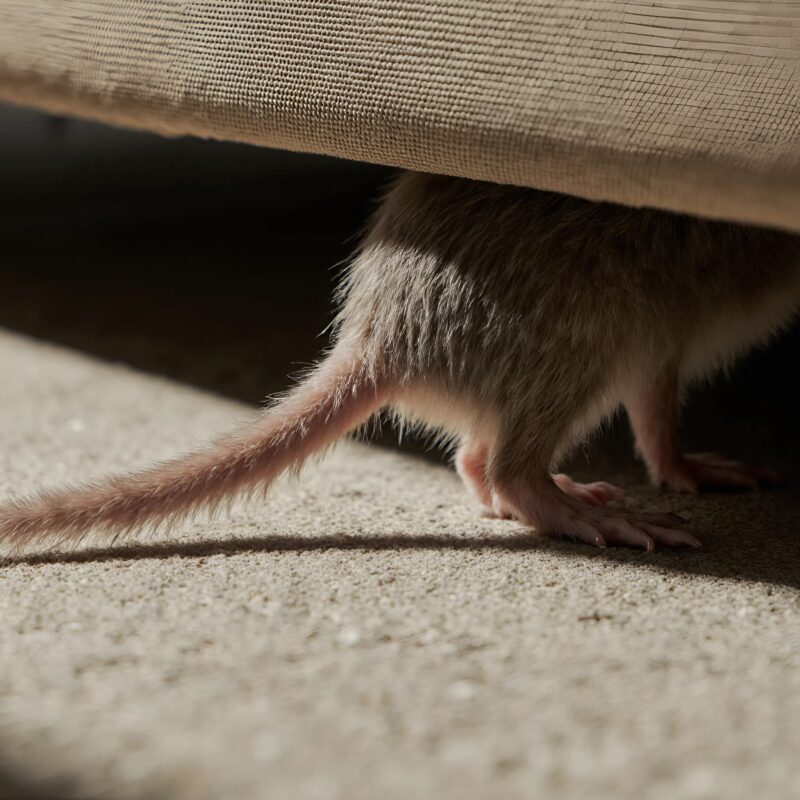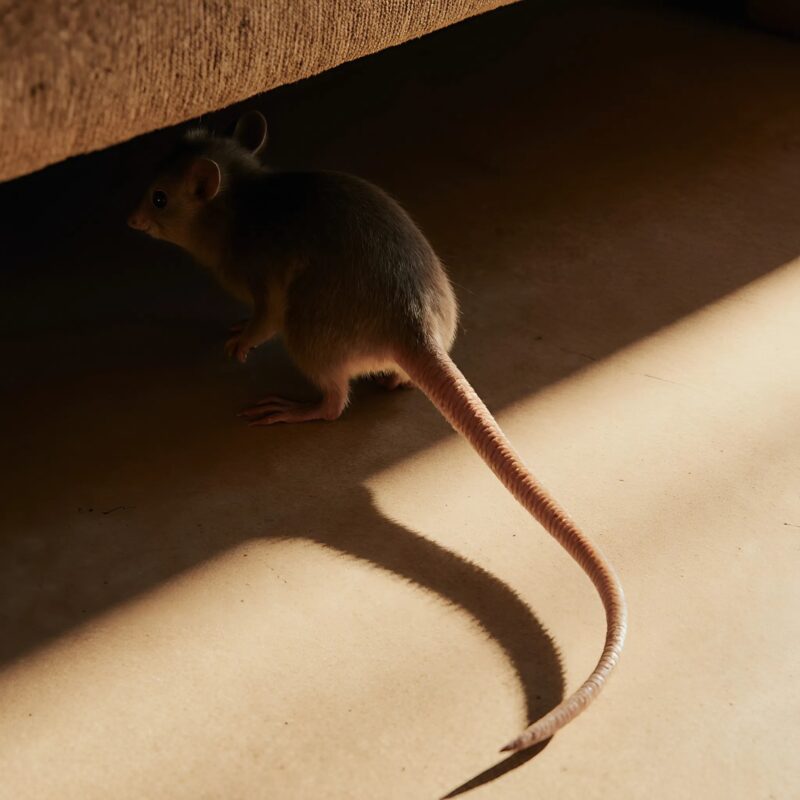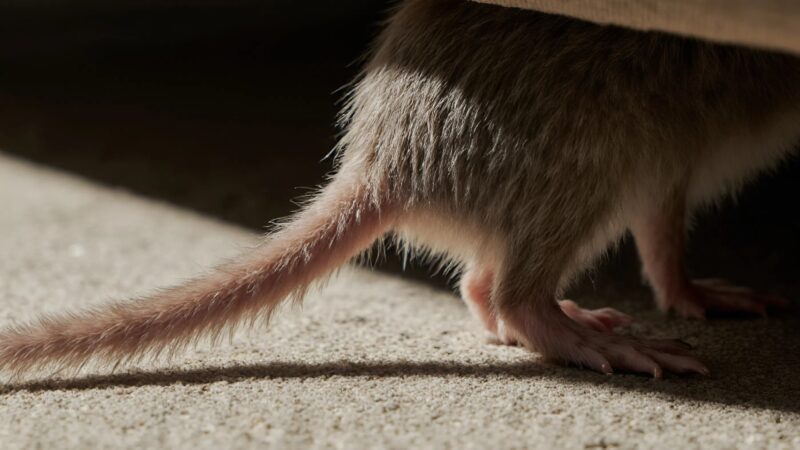The Code to My Kingdom
They banned me from the family reunion like I was a stain they needed to scrub out. And now I’m sitting in a rental car, watching my mother lead the pack up the driveway of the beach house she thinks is a lucky rental. She enters the code I set myself. They haul in coolers and confidence, oblivious that the deed has my LLC on it. I’ll let them settle in for twenty minutes before I remind them who really holds the keys.
My name is Skyla Morales, and right now I am invisible. I’m sitting in the driver’s seat of a rented silver sedan with tinted windows, parked just far enough away to be mistaken for a neighbor’s guest but close enough to see the sweat glistening on my mother’s forehead. The engine is off. The air conditioning died five minutes ago, and the Georgia heat is already starting to press against the glass like a heavy, wet blanket. It’s ninety degrees in Seabrook Cove today, with humidity that makes the air feel thick enough to drink.
I don’t mind the heat. The heat keeps me focused. It reminds me that I’m real, even if the people currently invading my property believe I have ceased to exist.
Through the windshield, I watch the caravan arrive. It’s a spectacle of entitlement. Three large SUVs pull into the driveway of the pristine three-story beach house that sits proudly against the backdrop of the Atlantic Ocean. The house is a beauty, if I do say so myself. I spent six months renovating it, choosing every slat of siding and every tile in the master bath. It stands tall, painted a soft, dusty blue that mimics the twilight sky, with white trim that gleams under the midday sun.
It looks expensive. It looks exclusive. It looks like exactly the kind of place my family feels they deserve, despite never having worked hard enough to earn it.
My mother, Linda, is the first to exit the lead vehicle. She steps onto the crushed-shell driveway wearing a wide-brimmed straw hat and a flowing floral caftan that screams vacation matriarch. She claps her hands, shouting directions at my father and my brother, Kyle, who are dragging coolers out of the trunk. Even from here with my windows rolled up, I can imagine her voice. It’s a frequency that cuts through glass. She points at the stairs leading up to the main deck, her fingers stabbing the air, directing traffic in a driveway she doesn’t own for a house she didn’t rent.
I watch her lips move. I know exactly what she’s saying. She’s telling them to be careful. She’s telling them not to scratch the paint. She’s acting like the guardian of the estate, the benevolent queen who has bestowed this luxury upon her subjects.
My phone vibrates in the cup holder. The screen lights up, displaying a notification from a messaging group titled “Family Reunion 2026.” I’m not a participant in this group anymore. Not really. I was removed as an active member weeks ago, but thanks to a glitch in the app—or perhaps the sheer incompetence of the admin, my sister Bridget—I can still see the preview of broadcast messages on my lock screen.
The message is from Bridget. It reads, “Final reminder to everyone. Skyla is not to be given the address. She is not invited. If anyone shares the location with her, you are ruining the vibe for Mom. Let’s keep this drama-free.”
I stare at the words. They’re sharp, concise, and cruel. A few years ago, reading that would have sent me spiraling into a panic attack. I would have called my father, begging to know what I did wrong. I would have texted Bridget apologizing for sins I hadn’t committed just to be allowed back into the circle. I would have driven down here with a store-bought cake and a desperate need for validation, hoping they would let me sleep on the couch.
But today I feel nothing. No, that’s not accurate. I feel a cold, precise satisfaction. It’s the feeling of a trap springing shut exactly when you intended it to.
I look back at the house. Bridget has stepped out of the second car. She’s holding her phone up, already recording a video for her social media. She spins in a circle, capturing the ocean view, the swaying dune grass, and the impressive façade of the house. She’s framing the narrative for her followers: Look at us. Look at our success. She poses near the front stairs, flashing a smile that doesn’t quite reach her eyes, selling a lifestyle that is entirely fraudulent.
They approach the front door. This is the moment. This is the test. The front door is equipped with a high-end smart lock. It requires a six-digit code. My family walks up to it with zero hesitation. They don’t fumble for keys. They don’t call a host. Linda steps up to the keypad, her posture radiating confidence.
She punches in the numbers: 1-9-8-5-0-7.
It’s my birthday. July 5th, 1985. The irony is thick enough to choke on. They’re using the date of my birth to enter a house they have explicitly banned me from. They likely assume the code was set by the rental agency or perhaps by whatever contact Linda claims to have used to secure this place. They don’t know that I set that code remotely three hours ago. I set it specifically because I knew it was the one number my mother would never forget. Not because she cares about me, but because it was the day her body was ruined by childbirth—a fact she has reminded me of at every birthday dinner for three decades.
The lock mechanism whirs. The small light on the keypad turns green. A distinct, cheerful chime echoes from the porch. The door opens. I watch them freeze for a split second as if they can’t believe it actually worked. And then a cheer goes up. Kyle high-fives my father. Bridget squeals, clapping her hands together before rushing inside. Linda turns back to the driveway, hands on her hips, looking at the rest of the relatives pouring out of the third car. She waves them in, benevolent and grand.
They stream into the foyer. I can see the movement through the large bay windows on the first floor. They’re reacting to the interior now. I know what they’re seeing. They’re seeing the hand-scraped oak floors I imported. They’re seeing the massive abstract oil painting in the entryway that I commissioned from a local artist in Savannah. They’re seeing the chef’s kitchen with the dual industrial ranges and the marble island that seats twelve.
They’re screaming with delight. I can see Bridget jumping up and down in the living room. She rushes to the window, looking out at the ocean, and for a second she looks right at my car, but she doesn’t see me. She sees only her own reflection in the glass, superimposed over the sea. She sees only what she wants to see—her own grandeur.
The Invisible Daughter
To understand why I’m sitting in a hot car watching my family break into my home, you have to understand who Skyla Morales is supposed to be. I am a non-entity. I’m thirty-four years old. I work in cybersecurity for a firm called Arborvale Tech Solutions. When people ask what I do, I tell them I work in data compliance. It’s a boring phrase designed to make people’s eyes glaze over, and it works every single time. It stops the questions. It prevents anyone from digging deeper.
If I told them I hunt down vulnerabilities in banking infrastructures or patch zero-day exploits that could cripple a hospital network, they might think I’m interesting. They might think I’m powerful. And in the Morales family, there’s only room for one kind of power, and I’m not the one who’s allowed to hold it.
Our family operates on a very specific, rigid operating system. My mother, Linda, is the sun, the gravity, and the heat death of the universe all wrapped into one. She dictates the emotional weather of the household. If she’s happy, we’re allowed to breathe. If she’s unhappy, it’s our job to fix it—usually by sacrificing our own comfort or dignity.
My father, Mark, is the master of avoidance. He’s a good man in the theoretical sense, meaning he never raises his hand and he goes to work every day, but he’s a coward in the practical sense. He learned long ago that the path of least resistance was to agree with Linda. Even when she was wrong. Even when she was cruel.
Then there’s Bridget, my older sister. The star. The golden goose who never actually lays any eggs. Bridget was born to be looked at. She consumes attention the way a fire consumes oxygen. Growing up, if Bridget had a recital, the world stopped. If Bridget had a breakup, the house went into mourning. She’s loud, chaotic, and charming in that superficial way that works on strangers but exhausts anyone who actually knows her.
And finally, Kyle—the baby, the boy. In a traditional structure like ours, the son can do no wrong. Kyle is thirty-one now, but to my mother he’s still a toddler who needs his shoes tied. He floats through life on a raft of excuses constructed by my parents. If he loses a job, it’s the boss’s fault. If he gets a speeding ticket, it’s the cop’s fault.
And then there’s me. Skyla. My role was simple. I was the insulation. I was the shock absorber. I learned early on that I wasn’t the smart one or the pretty one or the special one. I was the reliable one. That sounds like a compliment. But in a toxic family dynamic, it’s a curse. It means you’re the one who remembers the birthdays. You’re the one who drives the relatives to the airport at four in the morning because Bridget needs her beauty sleep and Kyle lost his license. You’re the one who lends money that never gets paid back.
I learned that if I did something well, I wasn’t praised. I was simply given more work. If I got straight A’s, it was expected. If I cleaned the kitchen, nobody noticed until I stopped doing it. The lesson was carved into my spine by the time I was twelve: Don’t ask for things. Don’t cause trouble. Don’t expect anyone to defend you.
So I learned to dissolve. I learned to let their words pass through me like I was made of smoke. But I also started building. I didn’t build with bricks or wood. Not at first. I built with silence. I got my degree without asking for a dime. I worked three jobs. I ate instant noodles and lived in an apartment the size of a closet so I would never have to ask my father for rent money.
When I got hired at Arborvale, I started making real money—serious money, the kind of money that changes lives. But I knew the rules. In my family, resources are communal, but debts are personal. If they knew I had money, it wouldn’t be my money. It would be the family’s money. So I became a hoarder of secrets. I drove a ten-year-old sedan with a dent in the bumper. I wore clothes from discount racks. I never talked about promotions.
When the company went public and my stock options vested, netting me a payout that made my knees weak, I went to work the next day with a bagged lunch and told my mother I was worried about layoffs. I lied to them every single day. And every lie bought me another brick of freedom.
The decision to buy the beach house in Seabrook Cove was the culmination of ten years of deception. I found it two years ago. It was a wreck then—a battered old structure that had taken a beating from a hurricane and been left to rot—but it sat on a stretch of sand that felt isolated, quiet. I bought it under an LLC, Seaglass Harbor Holdings. I hired a lawyer to handle the paperwork so my name would never appear on a public registry. I paid for the renovations in cash, wire transfers sent from accounts my family could not imagine existed.
I spent my weekends driving down here, telling my family I was working overtime or taking certification courses. I stripped wallpaper. I sanded floors until my hands were blistered. I chose every fixture, every paint color. I built a sanctuary designed for one person: me. I never intended to tell them. That was the point. This house was the one thing in the world that was mine.
The Exile
The digital execution happened exactly thirty days before the cars pulled into the driveway at Seabrook Cove. My phone had buzzed at seven sharp. It was a calendar invitation titled “Family Sync Regarding Reunion Logistics.” I remember staring at the notification while I was heating up leftover Thai food in my kitchen. A cold knot tightened in my stomach—the kind of visceral warning system that only activates when you know you’re about to walk into an ambush.
I accepted the invite and opened my laptop. The screen flickered to life, revealing the familiar grid of faces. My mother was sitting in her sunroom, the lighting perfectly arranged to soften the lines around her eyes. She was wearing a crisp white blouse, the kind she usually reserved for church or bank appointments. That was the first bad sign.
“Hello, everyone,” I said. My voice sounded thin in the quiet of my apartment.
“Hi, sweetie,” Linda said. Her voice was warm, dripping with that sickeningly sweet syrup she used to coat her poison. “We just wanted to hop on a quick call to finalize some details for the trip next month. We’ve made some executive decisions.”
I set my fork down. I knew better than to have an appetite when Linda was in executive mode.
“Well, we’ve been talking,” Linda continued. “Your father and I and Bridget, we’ve been discussing the vibe of this year’s reunion. We want this trip to be about relaxation. Total decompression. No stress, no work talk, no tension.”
I waited. Silence is the best counter to manipulation.
“And we have to be honest with each other. Skyla, lately you seem overwhelmed. You’re always so high-strung. Even when you’re with us, you’re checking your emails. You’re taking calls. It creates a certain energy, a heavy energy.”
I felt the blood rise to my cheeks. It was a lie. I hadn’t taken a work call during a family event in three years.
“I’m not stressed,” I said, keeping my voice level. “I actually have plenty of vacation time saved up. I was planning to leave my laptop at home.”
Linda smiled, a sad, pitying smile. “See, that’s exactly it. You’re already defensive. You’re already debating. This is what we mean, Skyla. You have this intensity that just doesn’t fit with the flow we’re trying to create.”
Then Bridget chimed in. She took a sip of her wine and swirled the glass. “Look, Skye, it’s not a big deal. Mom just thinks—well, we all think—that maybe you’d be happier skipping this one. You know, you clearly hate hanging out with us anyway. You always sit in the corner and judge everyone. It’s a buzzkill.”
“This isn’t about my attitude, is it?” I asked. The words left my mouth before I could stop them. “This is about the loan.”
Two weeks prior, Bridget had come to me with a brilliant business proposal. She wanted to start a curated lifestyle brand—essentially selling repackaged candles and tote bags. She needed fifty thousand dollars for inventory and website design. She had asked me to co-sign a business loan because her credit score was in ruins. I had said no. I had said it politely. I had offered to help her build the website myself for free. I had offered to help her write a business plan. But I refused to put my name on a fifty-thousand-dollar debt for a company that existed only in her imagination.
Linda’s face hardened. The mask of concern slipped, revealing the steel beneath. “This is not about money, Skyla. It’s about support. It’s about loyalty. When your sister needs you, you turn your back. You act superior. You hoard your success like it makes you better than us. That attitude. That’s what we don’t want at the beach house.”
So that was it. The verdict was in. I had refused to pay the toll. So I was barred from the bridge.
“We think it’s best for your mental health,” Linda said, pivoting back to the script. “We want you to take that week for yourself. Stay in the city. Work on your projects. We’ll send you pictures.”
Bridget laughed. “Yeah, it’s honestly better this way. Less drama. Better for everyone, right, Dad?”
I looked at my father’s square on the screen. “Dad?”
He looked up for a split second. His eyes met mine, and I saw the apology there. I saw the fear. He knew this was wrong. But he also knew that if he sided with me, he would be the one sleeping on the couch for the next six months.
He looked back down at the table. “Your mother just wants everyone to have a good time, Skyla,” he mumbled. “Maybe… maybe next year.”
“Fine,” I said. I didn’t argue. I didn’t beg. “If you don’t want me there, I won’t come.”
“Good,” Linda said, clapping her hands together once, briskly. “I’m glad we could handle this like adults. Now, for the rest of us, I’m sending the final itinerary in the group chat. We managed to secure that property I told you about, the one right on the water in Seabrook.”
I saw Bridget’s eyes light up. “The big one with the double deck?”
“Yes,” Linda beamed. “The owner finally approved the booking. It was a hassle, but I pulled some strings. It’s going to be spectacular.”
The screen went black. The call ended. Ten seconds later, my phone buzzed. I picked it up. It was a notification: You have been removed from the group “Reunion 2026 Planning.”
But in their haste to cut me off, they made a mistake. A split second before the removal notification appeared, a final message from Linda had come through to the group. It was a link to a digital brochure, accompanied by the text: “Here is the place. Everyone save the address.”
The preview of the link was still visible in my notification history: 42 Dune Grass Lane, Seabrook Cove, Georgia.
I froze. I stared at the tiny text on my lock screen. I knew that address. I knew it because I had typed it into insurance forms. I had typed it into tax documents. I had typed it into the GPS of my car a hundred times during those long weekend drives to check on the contractors.
It was my house.
The Perfect Trap
I sat down on the kitchen stool, my mind racing. They had somehow found my property. They had seen it listed somewhere—probably on a fake rental listing that I had never authorized. Or perhaps they had simply driven through Seabrook and spotted it, assuming it was available for rent because it looked like a vacation home. My mother, always resourceful when it came to securing things she wanted, had probably contacted the property management company I used for maintenance, Tidemark Property Care, and somehow convinced them she had permission to book it.
But she didn’t. And now they were planning to spend a week in my house, celebrating their success in exiling me, completely unaware that they were trespassing on my property.
The realization settled over me like a warm blanket. This was no longer just about being excluded. This was about them walking into the perfect trap of their own making. I could have called Tidemark immediately and had them cancel the booking. I could have changed the door code. I could have sent a lawyer’s letter.
But where would be the poetry in that? Where would be the justice in a simple cancellation email? They wanted me erased from their lives. They wanted to pretend I didn’t exist. Fine. I would let them. I would let them walk right into the house I built with my own hands and my own money. I would let them celebrate their cruelty in the very sanctuary I created to escape them.
And then I would show them exactly who Skyla Morales had become.
Now, sitting in this rental car, watching them laugh and unpack, I check the time on the dashboard. It’s three-sixteen in the afternoon. They’ve been inside for fourteen minutes. I need to give them a little more time. I need them to get comfortable. I need them to break a seal on a bottle of wine. I need them to use the bathroom. I need the forensic evidence of their presence to be undeniable.
I reach for the folder on the passenger seat. Inside is the deed to the house, the formation documents for Seaglass Harbor Holdings LLC, and a printed copy of the text message banning me from the reunion. It’s my arsenal.
I watch as the lights flicker on in the upstairs bedrooms. They’re claiming their territories. I know Linda is taking the master suite on the top floor, the one with the private balcony and the soaking tub that overlooks the dunes. Bridget will take the second-best room, the one with the queen bed and the vanity lighting I installed specifically for makeup application. Kyle will take the bunk room on the main floor because it’s closest to the seventy-five-inch television and the oversized leather sectional.
I roll down my window just a crack. The sound of the ocean is drowned out by the noise coming from the house. They’ve opened the sliding glass doors to the deck. Music is already blaring, some generic pop hit that Bridget loves. I hear the clinking of glass bottles. Someone is dragging a heavy cooler across the hardwood floor.
Linda’s voice drifts out, shrill and commanding. “Be careful with that cooler. Don’t scratch the floor. This place is worth millions.”
I almost smile. She’s right. It’s worth two-point-four million dollars, to be exact. And she’s terrified of damaging it—not because she respects property, but because she wants to pretend she belongs in it.
I check my security app. I have cameras installed in the main living areas and the exterior. I tap the screen, bringing up the feed from the living room. The image is crisp, high definition. There they are. My father is sinking into the white linen sofa, a beer already in his hand. He looks tired but relieved. He thinks he has a week of free luxury ahead of him.
Bridget is in the kitchen opening cabinets. She pulls out a crystal wine glass—my crystal wine glass—and holds it up to the light. She laughs, saying something to her fiancé, Dylan, who is leaning against the marble counter, looking impressed. They look like a commercial for the perfect American family: successful, happy, united. They have erased me completely.
I close the camera app. My heart is beating a steady, slow rhythm against my ribs. It’s a calmness I’ve had to learn. Years of therapy and years of working in cybersecurity have taught me one thing: Emotion is a vulnerability. Patience is a weapon.
I look at the digital clock on the dashboard. It’s three-twenty-two in the afternoon. They’ve been inside for twenty minutes. It’s time.
The Reckoning
I pick up my phone and dial a number I have saved as “Tidemark Management – Emergency Line.” It rings once, twice. A woman answers, her voice professional and crisp.
“Tidemark Property Care. This is Sarah. How can I help you?”
I clear my throat, ensuring my voice is steady. There’s no tremor. There’s no hesitation. “Hello, Sarah. This is Skyla Morales. I’m the owner of the property at 42 Dune Grass Lane.”
There’s a pause, the sound of typing on a keyboard. “Yes, Ms. Morales. We have your file right here. We weren’t expecting you until tomorrow for the inspection. Is everything all right?”
“No,” I say, my eyes fixed on my mother’s silhouette on the balcony. “Everything is not all right. I’m currently outside the property. I have reason to believe there are unauthorized individuals inside my home. They’ve bypassed the security code and are currently occupying the premises.”
The tone on the other end changes instantly, from polite to alert. “Oh my goodness. Are you safe? Do you want us to call the police immediately?”
I watch Linda laugh at something my father says. She looks so happy. She looks so secure. “Yes,” I say. “Please contact the sheriff’s department and let them know we have a breaking-and-entering situation. And send your on-call property manager as well. I’ll meet them at the property.”
“Absolutely, Ms. Morales. We’re on it right now. Are you certain you’re safe where you are?”
“I’m fine,” I say. “I’m in my car. Just please send help quickly.”
I hang up the phone and place it gently back in the cup holder. Then I step out of the rental car. The heat hits me immediately, but I don’t care. I straighten my shoulders, pick up the folder, and begin walking toward the house.
My footsteps crunch on the crushed-shell driveway. The sound is loud enough that Kyle, who is standing on the deck with a beer, turns to look. He squints at me, confused. He doesn’t recognize me at first. I’m backlit by the afternoon sun, just a silhouette approaching their paradise.
Then his eyes widen. “Skyla?”
The music stops. Faces appear in the windows. Bridget comes rushing to the sliding glass door, her phone still in her hand. “What the hell? What are you doing here?”
I don’t answer. I keep walking. I climb the stairs to the main deck, my eyes locked on my mother, who has emerged from inside, her wine glass still in hand. Her face goes through a rapid series of emotions: confusion, anger, fear.
“Skyla,” she says, her voice sharp. “You need to leave. Right now. You are not welcome here. This is our vacation rental.”
I reach the top of the stairs and stop. I look at each of them in turn. My father, frozen on the couch. Kyle, his beer halfway to his mouth. Bridget, her phone raised as if she’s considering calling someone. And Linda, standing there in her caftan, trying to look authoritative in my house.
“Your vacation rental,” I repeat slowly. “That’s interesting. Because I own this house.”
The silence is immediate and absolute. Even the ocean seems to quiet.
Bridget laughs, a nervous, brittle sound. “What are you talking about? Mom rented this place months ago.”
I open the folder and pull out the deed. I hold it up so they can all see it. “This is the deed to 42 Dune Grass Lane, Seabrook Cove, Georgia. It’s registered to Seaglass Harbor Holdings LLC. That’s my company. I’m the sole owner. I bought this property two years ago. I renovated it myself. And you are currently trespassing.”
Linda’s face has gone pale. “That’s impossible. I spoke to the property manager. They gave me the code. They confirmed the booking.”
“You spoke to a property management company that handles maintenance for me,” I say. “They don’t have authorization to rent this property. They never did. Whoever you spoke to made a mistake. Or perhaps you misrepresented yourself. Either way, you don’t have permission to be here.”
My father stands up slowly. “Skyla, sweetheart, there must be some misunderstanding. We can figure this out.”
“There is no misunderstanding, Dad,” I say. My voice is calm, measured. “You all made it very clear that I wasn’t welcome at this reunion. You banned me. You removed me from the group chat. You told everyone not to give me the address. And yet here you are, in my house, using my things, drinking my wine.”
Bridget’s face has gone from confused to furious. “You did this on purpose. You set us up.”
“I didn’t set you up,” I say. “You found this house on your own. You decided you deserved it. You walked right in without ever checking if you actually had the right to be here. I simply watched you do it.”
The sound of vehicles approaching cuts through the tension. Two sheriff’s department SUVs pull into the driveway, followed by a sedan marked with the Tidemark Property Care logo. Car doors slam. Footsteps on the stairs.
A deputy appears on the deck, his hand resting on his belt. “We got a call about a breaking and entering. Who’s the property owner here?”
I raise my hand. “That would be me, officer. Skyla Morales. These individuals entered my home without permission using a security code they should not have had access to.”
The deputy looks at my family, then back at me. “Ma’am, do you have documentation proving ownership?”
I hand him the deed. He examines it, then nods. He turns to my family. “Folks, I’m going to need you to gather your belongings and vacate the premises immediately. If there’s a dispute about a rental agreement, you’ll need to handle that through civil court, but right now you’re on private property without the owner’s consent.”
Linda’s mouth opens and closes. “But we… we had a code. The door opened.”
“That doesn’t constitute legal entry, ma’am,” the deputy says. “The owner is here, and she’s asking you to leave. You need to comply.”
I watch as the reality sinks in. Bridget looks like she wants to scream. Kyle looks confused, like he still can’t quite process what’s happening. My father won’t meet my eyes. And Linda, for perhaps the first time in her life, is truly speechless.
The Departure
They gather their belongings in a chaotic scramble. Coolers are dragged back to the cars. Suitcases are hauled down the stairs. Bridget is crying now, angry tears streaming down her face as she shoves her things into the trunk of her car. The deputies watch, making sure nothing is taken that doesn’t belong to them.
Linda approaches me one last time as she’s leaving. Her eyes are red, her voice shaking. “How could you do this to your own family?”
I look at her, this woman who gave birth to me but never truly saw me. “You banned me from this reunion because I wouldn’t bankroll Bridget’s fantasy business. You told me I wasn’t welcome. You erased me from your plans. And then you showed up at my house—the house I built with my own money, the house I never told you about because I knew you would find a way to take it from me—and you acted like it was yours. So I ask you, Mom: How could you?”
She has no answer. She turns and walks to her car, her caftan dragging in the crushed shells.
Within twenty minutes, the driveway is empty. The SUVs are gone. The deputies have taken their statements and left. The property manager has apologized profusely and promised a full investigation into how the booking was made. And I am alone.
I walk back into my house. The living room still smells like the perfume Bridget wears. There are wet rings on the coffee table where they set their drinks. I’ll clean it tomorrow. Right now, I walk through each room, reclaiming my space.
I climb the stairs to the master suite and step out onto the private balcony. The sun is starting to set, painting the sky in shades of orange and pink. The ocean stretches out before me, endless and indifferent. I take a deep breath, feeling the salt air fill my lungs.
My phone buzzes. It’s a text from a number I don’t recognize: “This is your father. I’m sorry. You were right about everything. I should have stood up for you.”
I read it twice, then delete it. His apology comes too late and costs him nothing.
Another buzz. This time it’s Bridget: “You’re a vindictive bitch and I hope you’re happy ruining our vacation.”
I delete that one too without responding.
I stand there on the balcony as the sky darkens, watching the waves crash against the shore. For thirty-four years, I have been the invisible daughter, the forgotten sister, the family ATM and punching bag. I have been told I am too much and not enough, too intense and too boring, too successful and too selfish.
But standing here in the house I built with my own hands, the house I paid for with money I earned, the house that represents every sacrifice and every lie I told to keep my family from destroying what I was building, I finally understand something.
I am not invisible. I never was. They simply refused to see me because acknowledging my success would mean acknowledging their failures. They refused to see me because I was useful as a shadow, as someone they could diminish to make themselves feel bigger.
But shadows disappear when you step into the light.
I am Skyla Morales. I am a cybersecurity specialist who protects critical infrastructure. I am a woman who turned pain into power and silence into strategy. I am a homeowner, a businesswoman, and someone who finally learned that the people who hurt you most are often the ones who deserve you least.
The beach house stands tall behind me, a monument to my resilience. Tomorrow I will change all the codes. I will upgrade the security system. I will make sure this sanctuary remains exactly what it was always meant to be: mine.
And if my family ever wonders what happened to the quiet daughter who never fought back, who never stood up for herself, who let them walk all over her for three decades, they can remember this day.
They can remember the day they broke into her house and discovered that the invisible girl had been building an empire they never saw coming.
The ocean roars in approval, and for the first time in my life, I smile without apologizing for the space I take up in the world.
They banned me from the family reunion like I was a stain they needed to scrub out. And now I’m sitting in a rental car, watching my mother lead the pack up the driveway of the beach house she thinks is a lucky rental. She enters the code I set myself. They haul in coolers and confidence, oblivious that the deed has my LLC on it. I’ll let them settle in for twenty minutes before I remind them who really holds the keys.
My name is Skyla Morales, and right now I am invisible. I’m sitting in the driver’s seat of a rented silver sedan with tinted windows, parked just far enough away to be mistaken for a neighbor’s guest but close enough to see the sweat glistening on my mother’s forehead. The engine is off. The air conditioning died five minutes ago, and the Georgia heat is already starting to press against the glass like a heavy, wet blanket. It’s ninety degrees in Seabrook Cove today, with humidity that makes the air feel thick enough to drink.
I don’t mind the heat. The heat keeps me focused. It reminds me that I’m real, even if the people currently invading my property believe I have ceased to exist.
Through the windshield, I watch the caravan arrive. It’s a spectacle of entitlement. Three large SUVs pull into the driveway of the pristine three-story beach house that sits proudly against the backdrop of the Atlantic Ocean. The house is a beauty, if I do say so myself. I spent six months renovating it, choosing every slat of siding and every tile in the master bath. It stands tall, painted a soft, dusty blue that mimics the twilight sky, with white trim that gleams under the midday sun.
It looks expensive. It looks exclusive. It looks like exactly the kind of place my family feels they deserve, despite never having worked hard enough to earn it.
My mother, Linda, is the first to exit the lead vehicle. She steps onto the crushed-shell driveway wearing a wide-brimmed straw hat and a flowing floral caftan that screams vacation matriarch. She claps her hands, shouting directions at my father and my brother, Kyle, who are dragging coolers out of the trunk. Even from here with my windows rolled up, I can imagine her voice. It’s a frequency that cuts through glass. She points at the stairs leading up to the main deck, her fingers stabbing the air, directing traffic in a driveway she doesn’t own for a house she didn’t rent.
I watch her lips move. I know exactly what she’s saying. She’s telling them to be careful. She’s telling them not to scratch the paint. She’s acting like the guardian of the estate, the benevolent queen who has bestowed this luxury upon her subjects.
My phone vibrates in the cup holder. The screen lights up, displaying a notification from a messaging group titled “Family Reunion 2026.” I’m not a participant in this group anymore. Not really. I was removed as an active member weeks ago, but thanks to a glitch in the app—or perhaps the sheer incompetence of the admin, my sister Bridget—I can still see the preview of broadcast messages on my lock screen.
The message is from Bridget. It reads, “Final reminder to everyone. Skyla is not to be given the address. She is not invited. If anyone shares the location with her, you are ruining the vibe for Mom. Let’s keep this drama-free.”
I stare at the words. They’re sharp, concise, and cruel. A few years ago, reading that would have sent me spiraling into a panic attack. I would have called my father, begging to know what I did wrong. I would have texted Bridget apologizing for sins I hadn’t committed just to be allowed back into the circle. I would have driven down here with a store-bought cake and a desperate need for validation, hoping they would let me sleep on the couch.
But today I feel nothing. No, that’s not accurate. I feel a cold, precise satisfaction. It’s the feeling of a trap springing shut exactly when you intended it to.
I look back at the house. Bridget has stepped out of the second car. She’s holding her phone up, already recording a video for her social media. She spins in a circle, capturing the ocean view, the swaying dune grass, and the impressive façade of the house. She’s framing the narrative for her followers: Look at us. Look at our success. She poses near the front stairs, flashing a smile that doesn’t quite reach her eyes, selling a lifestyle that is entirely fraudulent.
They approach the front door. This is the moment. This is the test. The front door is equipped with a high-end smart lock. It requires a six-digit code. My family walks up to it with zero hesitation. They don’t fumble for keys. They don’t call a host. Linda steps up to the keypad, her posture radiating confidence.
She punches in the numbers: 1-9-8-5-0-7.
It’s my birthday. July 5th, 1985. The irony is thick enough to choke on. They’re using the date of my birth to enter a house they have explicitly banned me from. They likely assume the code was set by the rental agency or perhaps by whatever contact Linda claims to have used to secure this place. They don’t know that I set that code remotely three hours ago. I set it specifically because I knew it was the one number my mother would never forget. Not because she cares about me, but because it was the day her body was ruined by childbirth—a fact she has reminded me of at every birthday dinner for three decades.
The lock mechanism whirs. The small light on the keypad turns green. A distinct, cheerful chime echoes from the porch. The door opens. I watch them freeze for a split second as if they can’t believe it actually worked. And then a cheer goes up. Kyle high-fives my father. Bridget squeals, clapping her hands together before rushing inside. Linda turns back to the driveway, hands on her hips, looking at the rest of the relatives pouring out of the third car. She waves them in, benevolent and grand.
They stream into the foyer. I can see the movement through the large bay windows on the first floor. They’re reacting to the interior now. I know what they’re seeing. They’re seeing the hand-scraped oak floors I imported. They’re seeing the massive abstract oil painting in the entryway that I commissioned from a local artist in Savannah. They’re seeing the chef’s kitchen with the dual industrial ranges and the marble island that seats twelve.
They’re screaming with delight. I can see Bridget jumping up and down in the living room. She rushes to the window, looking out at the ocean, and for a second she looks right at my car, but she doesn’t see me. She sees only her own reflection in the glass, superimposed over the sea. She sees only what she wants to see—her own grandeur.
The Invisible Daughter
To understand why I’m sitting in a hot car watching my family break into my home, you have to understand who Skyla Morales is supposed to be. I am a non-entity. I’m thirty-four years old. I work in cybersecurity for a firm called Arborvale Tech Solutions. When people ask what I do, I tell them I work in data compliance. It’s a boring phrase designed to make people’s eyes glaze over, and it works every single time. It stops the questions. It prevents anyone from digging deeper.
If I told them I hunt down vulnerabilities in banking infrastructures or patch zero-day exploits that could cripple a hospital network, they might think I’m interesting. They might think I’m powerful. And in the Morales family, there’s only room for one kind of power, and I’m not the one who’s allowed to hold it.
Our family operates on a very specific, rigid operating system. My mother, Linda, is the sun, the gravity, and the heat death of the universe all wrapped into one. She dictates the emotional weather of the household. If she’s happy, we’re allowed to breathe. If she’s unhappy, it’s our job to fix it—usually by sacrificing our own comfort or dignity.
My father, Mark, is the master of avoidance. He’s a good man in the theoretical sense, meaning he never raises his hand and he goes to work every day, but he’s a coward in the practical sense. He learned long ago that the path of least resistance was to agree with Linda. Even when she was wrong. Even when she was cruel.
Then there’s Bridget, my older sister. The star. The golden goose who never actually lays any eggs. Bridget was born to be looked at. She consumes attention the way a fire consumes oxygen. Growing up, if Bridget had a recital, the world stopped. If Bridget had a breakup, the house went into mourning. She’s loud, chaotic, and charming in that superficial way that works on strangers but exhausts anyone who actually knows her.
And finally, Kyle—the baby, the boy. In a traditional structure like ours, the son can do no wrong. Kyle is thirty-one now, but to my mother he’s still a toddler who needs his shoes tied. He floats through life on a raft of excuses constructed by my parents. If he loses a job, it’s the boss’s fault. If he gets a speeding ticket, it’s the cop’s fault.
And then there’s me. Skyla. My role was simple. I was the insulation. I was the shock absorber. I learned early on that I wasn’t the smart one or the pretty one or the special one. I was the reliable one. That sounds like a compliment. But in a toxic family dynamic, it’s a curse. It means you’re the one who remembers the birthdays. You’re the one who drives the relatives to the airport at four in the morning because Bridget needs her beauty sleep and Kyle lost his license. You’re the one who lends money that never gets paid back.
I learned that if I did something well, I wasn’t praised. I was simply given more work. If I got straight A’s, it was expected. If I cleaned the kitchen, nobody noticed until I stopped doing it. The lesson was carved into my spine by the time I was twelve: Don’t ask for things. Don’t cause trouble. Don’t expect anyone to defend you.
So I learned to dissolve. I learned to let their words pass through me like I was made of smoke. But I also started building. I didn’t build with bricks or wood. Not at first. I built with silence. I got my degree without asking for a dime. I worked three jobs. I ate instant noodles and lived in an apartment the size of a closet so I would never have to ask my father for rent money.
When I got hired at Arborvale, I started making real money—serious money, the kind of money that changes lives. But I knew the rules. In my family, resources are communal, but debts are personal. If they knew I had money, it wouldn’t be my money. It would be the family’s money. So I became a hoarder of secrets. I drove a ten-year-old sedan with a dent in the bumper. I wore clothes from discount racks. I never talked about promotions.
When the company went public and my stock options vested, netting me a payout that made my knees weak, I went to work the next day with a bagged lunch and told my mother I was worried about layoffs. I lied to them every single day. And every lie bought me another brick of freedom.
The decision to buy the beach house in Seabrook Cove was the culmination of ten years of deception. I found it two years ago. It was a wreck then—a battered old structure that had taken a beating from a hurricane and been left to rot—but it sat on a stretch of sand that felt isolated, quiet. I bought it under an LLC, Seaglass Harbor Holdings. I hired a lawyer to handle the paperwork so my name would never appear on a public registry. I paid for the renovations in cash, wire transfers sent from accounts my family could not imagine existed.
I spent my weekends driving down here, telling my family I was working overtime or taking certification courses. I stripped wallpaper. I sanded floors until my hands were blistered. I chose every fixture, every paint color. I built a sanctuary designed for one person: me. I never intended to tell them. That was the point. This house was the one thing in the world that was mine.
The Exile
The digital execution happened exactly thirty days before the cars pulled into the driveway at Seabrook Cove. My phone had buzzed at seven sharp. It was a calendar invitation titled “Family Sync Regarding Reunion Logistics.” I remember staring at the notification while I was heating up leftover Thai food in my kitchen. A cold knot tightened in my stomach—the kind of visceral warning system that only activates when you know you’re about to walk into an ambush.
I accepted the invite and opened my laptop. The screen flickered to life, revealing the familiar grid of faces. My mother was sitting in her sunroom, the lighting perfectly arranged to soften the lines around her eyes. She was wearing a crisp white blouse, the kind she usually reserved for church or bank appointments. That was the first bad sign.
“Hello, everyone,” I said. My voice sounded thin in the quiet of my apartment.
“Hi, sweetie,” Linda said. Her voice was warm, dripping with that sickeningly sweet syrup she used to coat her poison. “We just wanted to hop on a quick call to finalize some details for the trip next month. We’ve made some executive decisions.”
I set my fork down. I knew better than to have an appetite when Linda was in executive mode.
“Well, we’ve been talking,” Linda continued. “Your father and I and Bridget, we’ve been discussing the vibe of this year’s reunion. We want this trip to be about relaxation. Total decompression. No stress, no work talk, no tension.”
I waited. Silence is the best counter to manipulation.
“And we have to be honest with each other. Skyla, lately you seem overwhelmed. You’re always so high-strung. Even when you’re with us, you’re checking your emails. You’re taking calls. It creates a certain energy, a heavy energy.”
I felt the blood rise to my cheeks. It was a lie. I hadn’t taken a work call during a family event in three years.
“I’m not stressed,” I said, keeping my voice level. “I actually have plenty of vacation time saved up. I was planning to leave my laptop at home.”
Linda smiled, a sad, pitying smile. “See, that’s exactly it. You’re already defensive. You’re already debating. This is what we mean, Skyla. You have this intensity that just doesn’t fit with the flow we’re trying to create.”
Then Bridget chimed in. She took a sip of her wine and swirled the glass. “Look, Skye, it’s not a big deal. Mom just thinks—well, we all think—that maybe you’d be happier skipping this one. You know, you clearly hate hanging out with us anyway. You always sit in the corner and judge everyone. It’s a buzzkill.”
“This isn’t about my attitude, is it?” I asked. The words left my mouth before I could stop them. “This is about the loan.”
Two weeks prior, Bridget had come to me with a brilliant business proposal. She wanted to start a curated lifestyle brand—essentially selling repackaged candles and tote bags. She needed fifty thousand dollars for inventory and website design. She had asked me to co-sign a business loan because her credit score was in ruins. I had said no. I had said it politely. I had offered to help her build the website myself for free. I had offered to help her write a business plan. But I refused to put my name on a fifty-thousand-dollar debt for a company that existed only in her imagination.
Linda’s face hardened. The mask of concern slipped, revealing the steel beneath. “This is not about money, Skyla. It’s about support. It’s about loyalty. When your sister needs you, you turn your back. You act superior. You hoard your success like it makes you better than us. That attitude. That’s what we don’t want at the beach house.”
So that was it. The verdict was in. I had refused to pay the toll. So I was barred from the bridge.
“We think it’s best for your mental health,” Linda said, pivoting back to the script. “We want you to take that week for yourself. Stay in the city. Work on your projects. We’ll send you pictures.”
Bridget laughed. “Yeah, it’s honestly better this way. Less drama. Better for everyone, right, Dad?”
I looked at my father’s square on the screen. “Dad?”
He looked up for a split second. His eyes met mine, and I saw the apology there. I saw the fear. He knew this was wrong. But he also knew that if he sided with me, he would be the one sleeping on the couch for the next six months.
He looked back down at the table. “Your mother just wants everyone to have a good time, Skyla,” he mumbled. “Maybe… maybe next year.”
“Fine,” I said. I didn’t argue. I didn’t beg. “If you don’t want me there, I won’t come.”
“Good,” Linda said, clapping her hands together once, briskly. “I’m glad we could handle this like adults. Now, for the rest of us, I’m sending the final itinerary in the group chat. We managed to secure that property I told you about, the one right on the water in Seabrook.”
I saw Bridget’s eyes light up. “The big one with the double deck?”
“Yes,” Linda beamed. “The owner finally approved the booking. It was a hassle, but I pulled some strings. It’s going to be spectacular.”
The screen went black. The call ended. Ten seconds later, my phone buzzed. I picked it up. It was a notification: You have been removed from the group “Reunion 2026 Planning.”
But in their haste to cut me off, they made a mistake. A split second before the removal notification appeared, a final message from Linda had come through to the group. It was a link to a digital brochure, accompanied by the text: “Here is the place. Everyone save the address.”
The preview of the link was still visible in my notification history: 42 Dune Grass Lane, Seabrook Cove, Georgia.
I froze. I stared at the tiny text on my lock screen. I knew that address. I knew it because I had typed it into insurance forms. I had typed it into tax documents. I had typed it into the GPS of my car a hundred times during those long weekend drives to check on the contractors.
It was my house.
The Perfect Trap
I sat down on the kitchen stool, my mind racing. They had somehow found my property. They had seen it listed somewhere—probably on a fake rental listing that I had never authorized. Or perhaps they had simply driven through Seabrook and spotted it, assuming it was available for rent because it looked like a vacation home. My mother, always resourceful when it came to securing things she wanted, had probably contacted the property management company I used for maintenance, Tidemark Property Care, and somehow convinced them she had permission to book it.
But she didn’t. And now they were planning to spend a week in my house, celebrating their success in exiling me, completely unaware that they were trespassing on my property.
The realization settled over me like a warm blanket. This was no longer just about being excluded. This was about them walking into the perfect trap of their own making. I could have called Tidemark immediately and had them cancel the booking. I could have changed the door code. I could have sent a lawyer’s letter.
But where would be the poetry in that? Where would be the justice in a simple cancellation email? They wanted me erased from their lives. They wanted to pretend I didn’t exist. Fine. I would let them. I would let them walk right into the house I built with my own hands and my own money. I would let them celebrate their cruelty in the very sanctuary I created to escape them.
And then I would show them exactly who Skyla Morales had become.
Now, sitting in this rental car, watching them laugh and unpack, I check the time on the dashboard. It’s three-sixteen in the afternoon. They’ve been inside for fourteen minutes. I need to give them a little more time. I need them to get comfortable. I need them to break a seal on a bottle of wine. I need them to use the bathroom. I need the forensic evidence of their presence to be undeniable.
I reach for the folder on the passenger seat. Inside is the deed to the house, the formation documents for Seaglass Harbor Holdings LLC, and a printed copy of the text message banning me from the reunion. It’s my arsenal.
I watch as the lights flicker on in the upstairs bedrooms. They’re claiming their territories. I know Linda is taking the master suite on the top floor, the one with the private balcony and the soaking tub that overlooks the dunes. Bridget will take the second-best room, the one with the queen bed and the vanity lighting I installed specifically for makeup application. Kyle will take the bunk room on the main floor because it’s closest to the seventy-five-inch television and the oversized leather sectional.
I roll down my window just a crack. The sound of the ocean is drowned out by the noise coming from the house. They’ve opened the sliding glass doors to the deck. Music is already blaring, some generic pop hit that Bridget loves. I hear the clinking of glass bottles. Someone is dragging a heavy cooler across the hardwood floor.
Linda’s voice drifts out, shrill and commanding. “Be careful with that cooler. Don’t scratch the floor. This place is worth millions.”
I almost smile. She’s right. It’s worth two-point-four million dollars, to be exact. And she’s terrified of damaging it—not because she respects property, but because she wants to pretend she belongs in it.
I check my security app. I have cameras installed in the main living areas and the exterior. I tap the screen, bringing up the feed from the living room. The image is crisp, high definition. There they are. My father is sinking into the white linen sofa, a beer already in his hand. He looks tired but relieved. He thinks he has a week of free luxury ahead of him.
Bridget is in the kitchen opening cabinets. She pulls out a crystal wine glass—my crystal wine glass—and holds it up to the light. She laughs, saying something to her fiancé, Dylan, who is leaning against the marble counter, looking impressed. They look like a commercial for the perfect American family: successful, happy, united. They have erased me completely.
I close the camera app. My heart is beating a steady, slow rhythm against my ribs. It’s a calmness I’ve had to learn. Years of therapy and years of working in cybersecurity have taught me one thing: Emotion is a vulnerability. Patience is a weapon.
I look at the digital clock on the dashboard. It’s three-twenty-two in the afternoon. They’ve been inside for twenty minutes. It’s time.
The Reckoning
I pick up my phone and dial a number I have saved as “Tidemark Management – Emergency Line.” It rings once, twice. A woman answers, her voice professional and crisp.
“Tidemark Property Care. This is Sarah. How can I help you?”
I clear my throat, ensuring my voice is steady. There’s no tremor. There’s no hesitation. “Hello, Sarah. This is Skyla Morales. I’m the owner of the property at 42 Dune Grass Lane.”
There’s a pause, the sound of typing on a keyboard. “Yes, Ms. Morales. We have your file right here. We weren’t expecting you until tomorrow for the inspection. Is everything all right?”
“No,” I say, my eyes fixed on my mother’s silhouette on the balcony. “Everything is not all right. I’m currently outside the property. I have reason to believe there are unauthorized individuals inside my home. They’ve bypassed the security code and are currently occupying the premises.”
The tone on the other end changes instantly, from polite to alert. “Oh my goodness. Are you safe? Do you want us to call the police immediately?”
I watch Linda laugh at something my father says. She looks so happy. She looks so secure. “Yes,” I say. “Please contact the sheriff’s department and let them know we have a breaking-and-entering situation. And send your on-call property manager as well. I’ll meet them at the property.”
“Absolutely, Ms. Morales. We’re on it right now. Are you certain you’re safe where you are?”
“I’m fine,” I say. “I’m in my car. Just please send help quickly.”
I hang up the phone and place it gently back in the cup holder. Then I step out of the rental car. The heat hits me immediately, but I don’t care. I straighten my shoulders, pick up the folder, and begin walking toward the house.
My footsteps crunch on the crushed-shell driveway. The sound is loud enough that Kyle, who is standing on the deck with a beer, turns to look. He squints at me, confused. He doesn’t recognize me at first. I’m backlit by the afternoon sun, just a silhouette approaching their paradise.
Then his eyes widen. “Skyla?”
The music stops. Faces appear in the windows. Bridget comes rushing to the sliding glass door, her phone still in her hand. “What the hell? What are you doing here?”
I don’t answer. I keep walking. I climb the stairs to the main deck, my eyes locked on my mother, who has emerged from inside, her wine glass still in hand. Her face goes through a rapid series of emotions: confusion, anger, fear.
“Skyla,” she says, her voice sharp. “You need to leave. Right now. You are not welcome here. This is our vacation rental.”
I reach the top of the stairs and stop. I look at each of them in turn. My father, frozen on the couch. Kyle, his beer halfway to his mouth. Bridget, her phone raised as if she’s considering calling someone. And Linda, standing there in her caftan, trying to look authoritative in my house.
“Your vacation rental,” I repeat slowly. “That’s interesting. Because I own this house.”
The silence is immediate and absolute. Even the ocean seems to quiet.
Bridget laughs, a nervous, brittle sound. “What are you talking about? Mom rented this place months ago.”
I open the folder and pull out the deed. I hold it up so they can all see it. “This is the deed to 42 Dune Grass Lane, Seabrook Cove, Georgia. It’s registered to Seaglass Harbor Holdings LLC. That’s my company. I’m the sole owner. I bought this property two years ago. I renovated it myself. And you are currently trespassing.”
Linda’s face has gone pale. “That’s impossible. I spoke to the property manager. They gave me the code. They confirmed the booking.”
“You spoke to a property management company that handles maintenance for me,” I say. “They don’t have authorization to rent this property. They never did. Whoever you spoke to made a mistake. Or perhaps you misrepresented yourself. Either way, you don’t have permission to be here.”
My father stands up slowly. “Skyla, sweetheart, there must be some misunderstanding. We can figure this out.”
“There is no misunderstanding, Dad,” I say. My voice is calm, measured. “You all made it very clear that I wasn’t welcome at this reunion. You banned me. You removed me from the group chat. You told everyone not to give me the address. And yet here you are, in my house, using my things, drinking my wine.”
Bridget’s face has gone from confused to furious. “You did this on purpose. You set us up.”
“I didn’t set you up,” I say. “You found this house on your own. You decided you deserved it. You walked right in without ever checking if you actually had the right to be here. I simply watched you do it.”
The sound of vehicles approaching cuts through the tension. Two sheriff’s department SUVs pull into the driveway, followed by a sedan marked with the Tidemark Property Care logo. Car doors slam. Footsteps on the stairs.
A deputy appears on the deck, his hand resting on his belt. “We got a call about a breaking and entering. Who’s the property owner here?”
I raise my hand. “That would be me, officer. Skyla Morales. These individuals entered my home without permission using a security code they should not have had access to.”
The deputy looks at my family, then back at me. “Ma’am, do you have documentation proving ownership?”
I hand him the deed. He examines it, then nods. He turns to my family. “Folks, I’m going to need you to gather your belongings and vacate the premises immediately. If there’s a dispute about a rental agreement, you’ll need to handle that through civil court, but right now you’re on private property without the owner’s consent.”
Linda’s mouth opens and closes. “But we… we had a code. The door opened.”
“That doesn’t constitute legal entry, ma’am,” the deputy says. “The owner is here, and she’s asking you to leave. You need to comply.”
I watch as the reality sinks in. Bridget looks like she wants to scream. Kyle looks confused, like he still can’t quite process what’s happening. My father won’t meet my eyes. And Linda, for perhaps the first time in her life, is truly speechless.
The Departure
They gather their belongings in a chaotic scramble. Coolers are dragged back to the cars. Suitcases are hauled down the stairs. Bridget is crying now, angry tears streaming down her face as she shoves her things into the trunk of her car. The deputies watch, making sure nothing is taken that doesn’t belong to them.
Linda approaches me one last time as she’s leaving. Her eyes are red, her voice shaking. “How could you do this to your own family?”
I look at her, this woman who gave birth to me but never truly saw me. “You banned me from this reunion because I wouldn’t bankroll Bridget’s fantasy business. You told me I wasn’t welcome. You erased me from your plans. And then you showed up at my house—the house I built with my own money, the house I never told you about because I knew you would find a way to take it from me—and you acted like it was yours. So I ask you, Mom: How could you?”
She has no answer. She turns and walks to her car, her caftan dragging in the crushed shells.
Within twenty minutes, the driveway is empty. The SUVs are gone. The deputies have taken their statements and left. The property manager has apologized profusely and promised a full investigation into how the booking was made. And I am alone.
I walk back into my house. The living room still smells like the perfume Bridget wears. There are wet rings on the coffee table where they set their drinks. I’ll clean it tomorrow. Right now, I walk through each room, reclaiming my space.
I climb the stairs to the master suite and step out onto the private balcony. The sun is starting to set, painting the sky in shades of orange and pink. The ocean stretches out before me, endless and indifferent. I take a deep breath, feeling the salt air fill my lungs.
My phone buzzes. It’s a text from a number I don’t recognize: “This is your father. I’m sorry. You were right about everything. I should have stood up for you.”
I read it twice, then delete it. His apology comes too late and costs him nothing.
Another buzz. This time it’s Bridget: “You’re a vindictive bitch and I hope you’re happy ruining our vacation.”
I delete that one too without responding.
I stand there on the balcony as the sky darkens, watching the waves crash against the shore. For thirty-four years, I have been the invisible daughter, the forgotten sister, the family ATM and punching bag. I have been told I am too much and not enough, too intense and too boring, too successful and too selfish.
But standing here in the house I built with my own hands, the house I paid for with money I earned, the house that represents every sacrifice and every lie I told to keep my family from destroying what I was building, I finally understand something.
I am not invisible. I never was. They simply refused to see me because acknowledging my success would mean acknowledging their failures. They refused to see me because I was useful as a shadow, as someone they could diminish to make themselves feel bigger.
But shadows disappear when you step into the light.
I am Skyla Morales. I am a cybersecurity specialist who protects critical infrastructure. I am a woman who turned pain into power and silence into strategy. I am a homeowner, a businesswoman, and someone who finally learned that the people who hurt you most are often the ones who deserve you least.
The beach house stands tall behind me, a monument to my resilience. Tomorrow I will change all the codes. I will upgrade the security system. I will make sure this sanctuary remains exactly what it was always meant to be: mine.
And if my family ever wonders what happened to the quiet daughter who never fought back, who never stood up for herself, who let them walk all over her for three decades, they can remember this day.
They can remember the day they broke into her house and discovered that the invisible girl had been building an empire they never saw coming.
The ocean roars in approval, and for the first time in my life, I smile without apologizing for the space I take up in the world.
For years, my husband and I had dreamed of having a child. 🌟💑 We tried everything—countless tests, treatments, and endless hope. Every month brought a mix of anticipation and disappointment, and yet, we never gave up. Our hearts ached, but our love for each other never wavered. 💞
Finally, one magical day, I discovered I was pregnant. 🤰🌈 The excitement, the joy, the relief—it was overwhelming. After so many years of longing, our dream was finally coming true. We prepared for the baby with tenderness, decorating the nursery, picking tiny clothes, and imagining the life ahead. 🍼💖
Then, the day arrived. Labor was long but beautiful, and when my child was placed into my arms, I felt a wave of pure love. 😍✨ I couldn’t believe our dream had become a reality. But my husband’s reaction was… unexpected.

He stared at our baby with wide eyes, his expression frozen somewhere between astonishment and confusion. 😳 Our child’s eyes—light, sparkling blue—shone up at us. But both my husband and I have brown eyes, and neither of our families has a single person with blue eyes. 💙👀
A heavy silence filled the room. He looked at me, disbelief etched across his face, and in a voice trembling with doubt, he whispered, “This… this isn’t mine. Are you…?” 😔💔 My heart sank. The joy I felt a moment ago was replaced with shock and hurt.

After a tense and tearful discussion, he insisted on a DNA test. 🧬😢 I understood his confusion, yet my heart ached that our first moments of happiness were shadowed by suspicion. Still, we agreed—truth mattered most.
Days passed slowly as we waited for the results. ⏳ Every second was filled with anxious anticipation. I tried to focus on holding our baby, watching the little fingers curl around mine, the soft breathing, the tiny smiles that made my heart melt. 💞👶 But in the back of my mind lingered the fear that doubt could overshadow this miracle.

Finally, the results arrived. I held the paper with trembling hands. My husband’s eyes widened as he read: 99.9% probability he was the father. 😲💖 Relief, wonder, and amazement washed over him. The room felt lighter, brighter, filled with an unspoken magic. The phenomenon was rare, scientifically unusual, but entirely possible. Nature had given us a miracle—a child with light blue eyes, born to two brown-eyed parents. 🌈✨
Tears streamed down my husband’s face. 😭💙 He pulled me close and whispered apologies, promising never again to doubt my love or fidelity. 🥺💌 He kissed our baby’s forehead, marveling at the little miracle we had created together. From that moment, every glance at our child reminded us of hope, persistence, and the wonders life can bring. 🌟👶💞

Now, every day is filled with laughter, love, and the tiny blue eyes that sparkle like the sky on a summer day. 🌞💙 Every time our child smiles at us, I remember the long journey we endured—the tests, the treatments, the heartache—and how it all led to this incredible gift. 🎁💖
This experience taught us something profound: miracles can happen in the most unexpected ways. 💫 Life can challenge your faith, your patience, even your love—but sometimes, it rewards you with a miracle so rare, so extraordinary, that it leaves you speechless. 🌈✨

Our little blue-eyed wonder is more than a child; they are a symbol of love, perseverance, and the beauty of the unexpected. 💙👶💞 And now, every moment is cherished, every glance treasured, and every heartbeat celebrated. Life truly works in mysterious and miraculous ways. 💌🌟💖
Finally, one magical day, I discovered I was pregnant. 🤰🌈 The excitement, the joy, the relief—it was overwhelming. After so many years of longing, our dream was finally coming true. We prepared for the baby with tenderness, decorating the nursery, picking tiny clothes, and imagining the life ahead. 🍼💖
Then, the day arrived. Labor was long but beautiful, and when my child was placed into my arms, I felt a wave of pure love. 😍✨ I couldn’t believe our dream had become a reality. But my husband’s reaction was… unexpected.

He stared at our baby with wide eyes, his expression frozen somewhere between astonishment and confusion. 😳 Our child’s eyes—light, sparkling blue—shone up at us. But both my husband and I have brown eyes, and neither of our families has a single person with blue eyes. 💙👀
A heavy silence filled the room. He looked at me, disbelief etched across his face, and in a voice trembling with doubt, he whispered, “This… this isn’t mine. Are you…?” 😔💔 My heart sank. The joy I felt a moment ago was replaced with shock and hurt.

After a tense and tearful discussion, he insisted on a DNA test. 🧬😢 I understood his confusion, yet my heart ached that our first moments of happiness were shadowed by suspicion. Still, we agreed—truth mattered most.
Days passed slowly as we waited for the results. ⏳ Every second was filled with anxious anticipation. I tried to focus on holding our baby, watching the little fingers curl around mine, the soft breathing, the tiny smiles that made my heart melt. 💞👶 But in the back of my mind lingered the fear that doubt could overshadow this miracle.

Finally, the results arrived. I held the paper with trembling hands. My husband’s eyes widened as he read: 99.9% probability he was the father. 😲💖 Relief, wonder, and amazement washed over him. The room felt lighter, brighter, filled with an unspoken magic. The phenomenon was rare, scientifically unusual, but entirely possible. Nature had given us a miracle—a child with light blue eyes, born to two brown-eyed parents. 🌈✨
Tears streamed down my husband’s face. 😭💙 He pulled me close and whispered apologies, promising never again to doubt my love or fidelity. 🥺💌 He kissed our baby’s forehead, marveling at the little miracle we had created together. From that moment, every glance at our child reminded us of hope, persistence, and the wonders life can bring. 🌟👶💞

Now, every day is filled with laughter, love, and the tiny blue eyes that sparkle like the sky on a summer day. 🌞💙 Every time our child smiles at us, I remember the long journey we endured—the tests, the treatments, the heartache—and how it all led to this incredible gift. 🎁💖
This experience taught us something profound: miracles can happen in the most unexpected ways. 💫 Life can challenge your faith, your patience, even your love—but sometimes, it rewards you with a miracle so rare, so extraordinary, that it leaves you speechless. 🌈✨

Our little blue-eyed wonder is more than a child; they are a symbol of love, perseverance, and the beauty of the unexpected. 💙👶💞 And now, every moment is cherished, every glance treasured, and every heartbeat celebrated. Life truly works in mysterious and miraculous ways. 💌🌟💖
The Day I Found a Creature Hiding Under Our Sofa 🏠😱🍼
I was in the bedroom, folding tiny clothes and enjoying one of those rare moments of calm that come with having a baby. The house was quiet — too quiet, actually — until a sudden, sharp scream shattered everything. It was my baby’s voice. A sound so raw, so frightened, that my heart jumped straight into my throat. 😰🍼💥
I dropped everything and sprinted toward the living room, already imagining a hundred awful possibilities. But nothing — absolutely nothing — could have prepared me for what I saw when I burst through the doorway. 😳🚪
My baby had climbed onto a chair, gripping the backrest with trembling hands. His eyes were huge, staring at something below him. For a split second, I couldn’t understand what he was looking at… until I followed his gaze. 🪑👶➡️😨

There, under the sofa, was something moving.
Something alive.
Something… with a long, thin tail and a body covered in fur. 🐾🕳️👀
I gasped so loudly that even my baby startled. My legs felt like jelly, but instinct pushed me forward. I grabbed my son off the chair, holding him tight while my heart pounded hard enough to echo in my ears. Whatever that creature was, it was real — and it was right inside our house. 😱💓👐

Horrified, I shouted for my husband. “Come here! Something is under the sofa!” My voice cracked, halfway between panic and disbelief. 🗣️😖
He ran in immediately, still drying his hands with a kitchen towel. He glanced at us, then at the sofa, and I could see a flicker of confusion cross his face before he slowly crouched down. 🔦🧑🔧
The creature moved again.
My husband jumped back, then laughed nervously — the exact laugh of someone who wants to sound calm but absolutely is not. “Okay… okay, that’s not a rat… and it’s definitely not a lizard,” he muttered. 😬💦

He reached under the sofa with the towel, gently trying to guide the animal out. For a moment, he managed to catch it. It squirmed and wriggled, but he held on just long enough for me to get a clear look. My jaw dropped. I blinked twice, thinking my eyes were playing tricks on me. 😳👁️👁️
But no — it was real.
The creature wasn’t a rat.
It wasn’t a squirrel.
It wasn’t anything I expected to ever see inside my house.
It was… an Elephant Shrew. 🐘🐭✨
Yes — an Elephant Shrew! A tiny creature with a pointed snout, long legs, soft fur, and a tail almost as long as its body. Something that looked like it belonged in a nature documentary, not wedged under our living room furniture. 📺🌿😅

My husband carefully released it outside, and the moment its little feet touched the grass, it darted away with impressive speed, disappearing into a bush like a miniature jungle explorer. 🌿💨🐾
When the adrenaline finally left my body, I started laughing — first quietly, then uncontrollably. The absurdity of it all hit me at once. My baby screamed his head off, my husband fought a wild animal with a dish towel, and the terrifying creature turned out to be one of the cutest mammals on Earth. 😂🍼💞
For the rest of the day, we could barely talk about anything else. Every time we tried, we ended up laughing again. Even my baby pointed at the sofa nervously, then giggled as if he knew he had survived a great adventure. 🛋️👶🌟

Now, every time someone visits, my husband proudly tells the story.
“Not everyone finds an Elephant Shrew in their living room,” he says.
And honestly… he’s right. 😄📖🐘🐭
I was in the bedroom, folding tiny clothes and enjoying one of those rare moments of calm that come with having a baby. The house was quiet — too quiet, actually — until a sudden, sharp scream shattered everything. It was my baby’s voice. A sound so raw, so frightened, that my heart jumped straight into my throat. 😰🍼💥
I dropped everything and sprinted toward the living room, already imagining a hundred awful possibilities. But nothing — absolutely nothing — could have prepared me for what I saw when I burst through the doorway. 😳🚪
My baby had climbed onto a chair, gripping the backrest with trembling hands. His eyes were huge, staring at something below him. For a split second, I couldn’t understand what he was looking at… until I followed his gaze. 🪑👶➡️😨

There, under the sofa, was something moving.
Something alive.
Something… with a long, thin tail and a body covered in fur. 🐾🕳️👀
I gasped so loudly that even my baby startled. My legs felt like jelly, but instinct pushed me forward. I grabbed my son off the chair, holding him tight while my heart pounded hard enough to echo in my ears. Whatever that creature was, it was real — and it was right inside our house. 😱💓👐

Horrified, I shouted for my husband. “Come here! Something is under the sofa!” My voice cracked, halfway between panic and disbelief. 🗣️😖
He ran in immediately, still drying his hands with a kitchen towel. He glanced at us, then at the sofa, and I could see a flicker of confusion cross his face before he slowly crouched down. 🔦🧑🔧
The creature moved again.
My husband jumped back, then laughed nervously — the exact laugh of someone who wants to sound calm but absolutely is not. “Okay… okay, that’s not a rat… and it’s definitely not a lizard,” he muttered. 😬💦

He reached under the sofa with the towel, gently trying to guide the animal out. For a moment, he managed to catch it. It squirmed and wriggled, but he held on just long enough for me to get a clear look. My jaw dropped. I blinked twice, thinking my eyes were playing tricks on me. 😳👁️👁️
But no — it was real.
The creature wasn’t a rat.
It wasn’t a squirrel.
It wasn’t anything I expected to ever see inside my house.
It was… an Elephant Shrew. 🐘🐭✨
Yes — an Elephant Shrew! A tiny creature with a pointed snout, long legs, soft fur, and a tail almost as long as its body. Something that looked like it belonged in a nature documentary, not wedged under our living room furniture. 📺🌿😅

My husband carefully released it outside, and the moment its little feet touched the grass, it darted away with impressive speed, disappearing into a bush like a miniature jungle explorer. 🌿💨🐾
When the adrenaline finally left my body, I started laughing — first quietly, then uncontrollably. The absurdity of it all hit me at once. My baby screamed his head off, my husband fought a wild animal with a dish towel, and the terrifying creature turned out to be one of the cutest mammals on Earth. 😂🍼💞
For the rest of the day, we could barely talk about anything else. Every time we tried, we ended up laughing again. Even my baby pointed at the sofa nervously, then giggled as if he knew he had survived a great adventure. 🛋️👶🌟

Now, every time someone visits, my husband proudly tells the story.
“Not everyone finds an Elephant Shrew in their living room,” he says.
And honestly… he’s right. 😄📖🐘🐭

Princess of Wales reportedly pushes for family unity despite resistance from within the royal circle
Catherine is said to be quietly working to heal the long-standing rift between Harry and the Royal Family, even as her efforts are met with scepticism from Queen Camilla According to a report by OK! Magazine, the Princess of Wales believes reconciliation is worth pursuing and has been encouraging William to consider taking the first step towards repairing relations with Harry. Sources suggest Catherine remains focused on family unity, particularly after her own prolonged health struggles.
An insider claimed Catherine is not discouraged by opposing views within the family and feels strongly about preserving relationships wherever possible. They said her approach reflects a belief that rebuilding connections is more important than revisiting past grievances.
The source added that Catherine sees herself as a mediator and hopes to create an opening for Harry that might otherwise no longer exist. Her actions, they said, are driven by a desire to protect the wider family bond rather than take sides.However, Queen Camilla reportedly holds a more cautious stance. She is said to feel that any reconciliation should come on Harry’s terms and without outside pressure. While Catherine’s intentions are viewed as sincere, some within the royal circle believe her involvement risks complicating an already sensitive situation.
For now, Catherine appears undeterred, continuing her efforts behind the scenes despite doubts about whether Harry’s return to the family fold is realistic.

I took a deep breath and met the judge’s gaze head-on. “Your Honor,” I began, my voice steady though my heart raced, “I am here today not just as Evelyn Carter, but as someone who served this country, someone who has always tried to do the right thing.”
The courtroom was silent, the tension palpable. My parents sat rigidly, unwilling or unable to meet my eyes. I glanced at them briefly before continuing, “The house in question was left to me by my grandfather, a man who believed in service and sacrifice. I have paid the taxes and maintained the property as best I could, given my circumstances.”
Judge Simmons nodded, considering my words. “And the allegation of abandonment, how do you respond?”
“Your Honor,” I said, “my absence was due to my service. As a Navy SEAL, I was deployed overseas, serving in capacities that required my full attention and presence. It was never my intention to abandon anything or anyone—only to serve my country, a decision I made with a heavy heart but firm conviction.”
The judge leaned back, eyes narrowing slightly as he weighed the situation. “Mr. and Mrs. Carter, do you have evidence that your daughter abandoned her responsibilities?”
My father hesitated, then spoke, his voice a mix of frustration and regret. “We felt—she left without a word. We thought she’d forgotten us, forgotten the family.”
I felt a pang of sadness at his words. “It’s not that simple, Dad,” I replied softly, breaking the courtroom decorum for a moment. “My duty was to my country, but that didn’t mean leaving you behind forever. I was following a calling, one I hoped you’d understand even if it took time.”
Mom finally spoke, her voice barely above a whisper. “We didn’t understand, Evelyn. We thought you chose them over us.”
“I never chose one over the other,” I said. “It was a choice to serve, but not to abandon.” Knox nudged my leg gently, grounding me in the moment.
Judge Simmons cleared his throat, drawing the attention back to him. “The law is clear on property rights and abandonment. Commander Carter has provided evidence of her continued responsibility towards the property.” He paused, looking at my parents with a touch of empathy. “The feelings of being left behind are real, but legally, Commander Carter has not abandoned her property.”
A wave of relief washed over me, but it was bittersweet. My parents looked defeated, and I wondered if there was a way to bridge the gap that had grown between us.
The judge continued, “Family is complicated. But this courtroom is for legal resolutions, not emotional ones. I suggest, as a family, you find a way to speak and understand each other outside these walls.”
With a finality that echoed in the silent room, he concluded, “Case dismissed.”
The weight of years of misunderstanding hung heavily around us as I turned to leave the courtroom. My father’s eyes met mine, softer now, perhaps with an unspoken apology. My mother gave a small nod, acknowledgment of a truth long denied.
As Knox and I walked out into the bright sunlight, I realized that this was the beginning of a different mission—one of reconciliation and healing. The uniform had told them who I had become, but it was time to show them who I still was: their daughter.
A Scene Too Intense to Forget
What first appears to be an ordinary roadside clip quickly transforms into something that leaves viewers unsettled. A large fuel tanker sits motionless under a visibly damaged bridge. Cracks spread across the concrete, the support beams appear strained, and every shift in the structure seems to hint at the possibility of collapse.
The short video, which has circulated widely across TikTok and other platforms, has been nicknamed “Seconds from Collapse” by online audiences. It raises a haunting question: was this a real disaster narrowly avoided, a staged awareness piece, or simply a moment caught during construction or demolition work?
The footage provides no answers. Instead, it leaves millions of viewers speculating, debating, and reflecting on the fragility of everyday safety.

Why the Clip Captivates Millions
Part of the reason the viral clip has gained so much traction is its powerful imagery. A tanker carrying fuel, one of the most dangerous types of cargo, sits beneath a bridge that looks as though it could give way at any second. The visual alone is enough to stir fear.
For many people, it also taps into a universal anxiety: the collapse of structures we depend on every day. Bridges, highways, and overpasses are part of the daily rhythm of modern life. When we see one in danger of failing, it touches something deeply human—the awareness that stability can vanish without warning.
The lack of context only makes the video more gripping. Some captions claim it depicts an old bridge that gave way under stress, while others suggest it was filmed during a planned demolition or a controlled safety test. Without verified details, the audience is left to wonder, filling in the blanks with their own fears and memories of past tragedies.

Real-Life Parallels Add Weight
Even if the clip itself remains unexplained, it strongly resembles real-life disasters that have already taken place across the world.
In Taiwan in 2019, the Nanfang’ao Bridge collapsed suddenly, sending a tanker and several fishing boats crashing into the water below. The horrifying event was captured on camera and quickly made global headlines.
In India in 2025, Gujarat’s Gambhira Bridge gave way during morning traffic, leaving a tanker dangling from the wreckage while rescue teams fought to secure the structure in dangerous conditions.
In Brazil in 2024, a highway bridge collapsed just as a tanker carrying hazardous chemicals was crossing. The incident caused both human loss and environmental contamination, sparking national debates about infrastructure investment.
When viewers see the viral “tanker under bridge” video, many are reminded of these real events. That connection adds gravity to what might otherwise be dismissed as a staged performance or a routine construction scene.

A Symbol of Larger Fears
Beyond the question of authenticity, the video has become a symbol of something much bigger. Around the world, countless bridges and highways are operating beyond their intended lifespan. Some were built decades ago for lighter traffic loads, yet today they carry far more vehicles than ever imagined.
Engineers have long warned that delayed maintenance and insufficient funding put these structures at risk. Each time a viral clip like this emerges, it reignites public conversation about whether enough is being done to ensure safety.
For many viewers, the tanker frozen beneath the cracked bridge becomes more than just an eerie image. It serves as a metaphor for vulnerability—the idea that society often waits until disaster strikes before addressing problems that were visible all along.
The Role of Viral Media
The internet plays a major role in shaping how such imagery spreads. A short, context-free video can travel faster than official reports, sparking speculation before authorities have a chance to clarify details. While this can lead to confusion, it also draws much-needed attention to issues that might otherwise go unnoticed.
In this case, whether the video was staged or not, it has already fueled widespread discussion about infrastructure safety. Viewers share their own experiences of driving over deteriorating bridges, express concern for loved ones who travel daily, and call for stronger investment in public works.
That ripple effect demonstrates the power of viral media: even a 20-second clip can inspire serious conversations about safety, responsibility, and preparedness.

Courage in Times of Collapse
Amid the anxiety stirred by the footage, it is also important to remember that moments of crisis often reveal human resilience. In past bridge collapses, ordinary drivers have acted within seconds to save others. Emergency responders have risked their own lives to stabilize unstable structures, evacuate victims, and prevent further harm.
These stories highlight that even when systems fail, courage and compassion rise to meet the challenge. The viral tanker video may remind us of danger, but it can also remind us of the bravery that surfaces when people face the unthinkable.
Lessons to Take Away
The sight of a tanker halted under a deteriorating bridge leaves us with a lasting impression. Whether the video shows a real near-disaster, a staged awareness campaign, or a controlled construction moment, its impact cannot be denied.
It underscores that safety is never guaranteed. Structures we rely on daily require constant monitoring, repair, and investment. Ignoring cracks—literal or metaphorical—can have devastating consequences.
At the same time, the clip offers a chance to reflect on how communities respond when faced with fear. Public awareness, media attention, and collective action can push leaders to prioritize safety before tragedy strikes.

Conclusion
In the end, the viral video of a tanker trapped under a crumbling bridge has become more than entertainment. It is a mirror of our shared anxieties and a reminder of real events that have taken lives in the past. It asks us to imagine what we would do if faced with the same sight, and it challenges society to ensure that such scenarios remain rare.
Preparedness is not optional. Bridges, roads, and other critical infrastructure form the backbone of modern life. One overlooked crack can change everything. By taking warnings seriously, investing in maintenance, and staying vigilant, we can turn moments of fear into opportunities for resilience and prevention.
What first appears to be an ordinary roadside clip quickly transforms into something that leaves viewers unsettled. A large fuel tanker sits motionless under a visibly damaged bridge. Cracks spread across the concrete, the support beams appear strained, and every shift in the structure seems to hint at the possibility of collapse.
The short video, which has circulated widely across TikTok and other platforms, has been nicknamed “Seconds from Collapse” by online audiences. It raises a haunting question: was this a real disaster narrowly avoided, a staged awareness piece, or simply a moment caught during construction or demolition work?
The footage provides no answers. Instead, it leaves millions of viewers speculating, debating, and reflecting on the fragility of everyday safety.

Why the Clip Captivates Millions
Part of the reason the viral clip has gained so much traction is its powerful imagery. A tanker carrying fuel, one of the most dangerous types of cargo, sits beneath a bridge that looks as though it could give way at any second. The visual alone is enough to stir fear.
For many people, it also taps into a universal anxiety: the collapse of structures we depend on every day. Bridges, highways, and overpasses are part of the daily rhythm of modern life. When we see one in danger of failing, it touches something deeply human—the awareness that stability can vanish without warning.
The lack of context only makes the video more gripping. Some captions claim it depicts an old bridge that gave way under stress, while others suggest it was filmed during a planned demolition or a controlled safety test. Without verified details, the audience is left to wonder, filling in the blanks with their own fears and memories of past tragedies.

Real-Life Parallels Add Weight
Even if the clip itself remains unexplained, it strongly resembles real-life disasters that have already taken place across the world.
In Taiwan in 2019, the Nanfang’ao Bridge collapsed suddenly, sending a tanker and several fishing boats crashing into the water below. The horrifying event was captured on camera and quickly made global headlines.
In India in 2025, Gujarat’s Gambhira Bridge gave way during morning traffic, leaving a tanker dangling from the wreckage while rescue teams fought to secure the structure in dangerous conditions.
In Brazil in 2024, a highway bridge collapsed just as a tanker carrying hazardous chemicals was crossing. The incident caused both human loss and environmental contamination, sparking national debates about infrastructure investment.
When viewers see the viral “tanker under bridge” video, many are reminded of these real events. That connection adds gravity to what might otherwise be dismissed as a staged performance or a routine construction scene.

A Symbol of Larger Fears
Beyond the question of authenticity, the video has become a symbol of something much bigger. Around the world, countless bridges and highways are operating beyond their intended lifespan. Some were built decades ago for lighter traffic loads, yet today they carry far more vehicles than ever imagined.
Engineers have long warned that delayed maintenance and insufficient funding put these structures at risk. Each time a viral clip like this emerges, it reignites public conversation about whether enough is being done to ensure safety.
For many viewers, the tanker frozen beneath the cracked bridge becomes more than just an eerie image. It serves as a metaphor for vulnerability—the idea that society often waits until disaster strikes before addressing problems that were visible all along.
The Role of Viral Media
The internet plays a major role in shaping how such imagery spreads. A short, context-free video can travel faster than official reports, sparking speculation before authorities have a chance to clarify details. While this can lead to confusion, it also draws much-needed attention to issues that might otherwise go unnoticed.
In this case, whether the video was staged or not, it has already fueled widespread discussion about infrastructure safety. Viewers share their own experiences of driving over deteriorating bridges, express concern for loved ones who travel daily, and call for stronger investment in public works.
That ripple effect demonstrates the power of viral media: even a 20-second clip can inspire serious conversations about safety, responsibility, and preparedness.
Courage in Times of Collapse
Amid the anxiety stirred by the footage, it is also important to remember that moments of crisis often reveal human resilience. In past bridge collapses, ordinary drivers have acted within seconds to save others. Emergency responders have risked their own lives to stabilize unstable structures, evacuate victims, and prevent further harm.
These stories highlight that even when systems fail, courage and compassion rise to meet the challenge. The viral tanker video may remind us of danger, but it can also remind us of the bravery that surfaces when people face the unthinkable.
Lessons to Take Away
The sight of a tanker halted under a deteriorating bridge leaves us with a lasting impression. Whether the video shows a real near-disaster, a staged awareness campaign, or a controlled construction moment, its impact cannot be denied.
It underscores that safety is never guaranteed. Structures we rely on daily require constant monitoring, repair, and investment. Ignoring cracks—literal or metaphorical—can have devastating consequences.
At the same time, the clip offers a chance to reflect on how communities respond when faced with fear. Public awareness, media attention, and collective action can push leaders to prioritize safety before tragedy strikes.

Conclusion
In the end, the viral video of a tanker trapped under a crumbling bridge has become more than entertainment. It is a mirror of our shared anxieties and a reminder of real events that have taken lives in the past. It asks us to imagine what we would do if faced with the same sight, and it challenges society to ensure that such scenarios remain rare.
Preparedness is not optional. Bridges, roads, and other critical infrastructure form the backbone of modern life. One overlooked crack can change everything. By taking warnings seriously, investing in maintenance, and staying vigilant, we can turn moments of fear into opportunities for resilience and prevention.

🌧️ The Diagnosis That Changed Everything 🌧️
For almost a month, I woke up every morning with the same heavy ache twisting inside my stomach. At first, I blamed stress, long workdays, even the new diet I had started. But the pain kept returning—slowly, steadily, insistently—like a quiet knock I could no longer ignore. 😣
By the third week, the discomfort had grown into something that practically followed me everywhere. I struggled to sleep, struggled to eat, and often found myself sitting at the edge of my bed wondering what was happening inside my own body. The uncertainty frightened me more than I wanted to admit. 😔
Finally, I decided to visit a doctor. I described every symptom carefully, expecting him to tell me it was something simple. But instead, he paused, frowned slightly, and said words that made my pulse quicken.
He told me something was unusual—very unusual—about the pain I was describing. His voice was calm, but it carried a weight that made my thoughts spin.

His unexpected expression, the careful tone, the seriousness—it all shocked me. 💥
And yet… there were no answers. Only more questions.
That night, I called my mother-in-law. She has always been practical, level-headed, and strangely gifted at cutting straight to the truth. When she heard my symptoms, she didn’t hesitate for even a second.
“Go to the hospital,” she said firmly. “Don’t wait another day.”
Her certainty scared me more than the pain itself. But I listened. The next morning, with trembling hands, I walked into the hospital. My heart thumped as I explained everything to the medical staff. They listened carefully, asked dozens of questions, and exchanged glances that made me hold my breath.
Everyone initially thought it was the gallbladder. The symptoms fit perfectly—at least on paper. The doctor nodded thoughtfully, then sent me for an ultrasound just to be sure.
I lay there on the examination table, cold gel on my skin, the room filled with nothing but the soft hum of the machine. My mind raced through a hundred possible scenarios. None of them were even close to the truth.

And then… something unexpected appeared on the screen.
Something small.
Something moving.
Something alive.

The technician froze. Then she smiled.
I blinked, confused, my heart pounding so loudly I could barely hear her words.
“There’s a heartbeat,” she whispered. 💗
For several seconds, I couldn’t breathe. Couldn’t think.
I stared at the screen, my eyes wide, my body shaking as reality crashed over me like a wave I never saw coming.
I wasn’t sick.
I wasn’t dealing with a failing organ.
I wasn’t imagining my symptoms.
I was pregnant. 🤰✨
A hidden pregnancy. One that had quietly grown without the usual signs, without the typical symptoms, without a single hint loud enough for me to notice.

My mouth fell open, and I covered it with my hands as tears blurred my vision. I felt shock, fear, relief, joy—every emotion twisting into one overwhelming moment I knew I would never forget. 😭❤️
When I finally walked out of the examination room, the doctor, the nurse, even the receptionist looked at me with the same astonished expression.
But for the first time in a long time, the trembling inside me wasn’t fear.
It was life.
New life.
A life I didn’t know was growing inside me—yet one I already loved with every part of my heart. 💞✨
And in that moment, all the pain, all the fear, all the confusion… suddenly made sense.
My story had just taken a turn I never could have imagined. 🌟
💖👶 “The Incredible Story of María and Teresa Tapia — United by Birth, Divided by Miracles” 👶💖
When María and Teresa Tapia were born, doctors and family alike stood in stunned silence. 😢 The twin girls came into the world joined at the chest and abdomen — their tiny bodies connected by vital organs, their hearts beating almost as one. ❤️
From the very beginning, the odds were stacked against them. The sisters shared a liver, a pancreas, and even parts of their intestines — organs that most doctors would never dare to separate. The chances of survival? Less than one in a hundred thousand. 💔
Yet, their mother, Lisandra, refused to lose hope. 🙏 “They were both fighting to breathe, to live,” she later recalled. “How could I ever stop believing in them?”
For months, the Tapia family lived in uncertainty. Each medical checkup was filled with anxiety — would the twins ever be able to live independent lives? Could science really divide what nature had fused together? 🧬

Then, a team of surgeons at Richmond Children’s Hospital in the United States decided to take the challenge. 💉👩⚕️👨⚕️ Six specialists from different fields joined forces to plan one of the most complex surgeries ever attempted. For weeks, they trained tirelessly — studying 3D models, rehearsing procedures, and even creating life-sized plaster casts of the twins’ bodies to simulate the operation. 🏥
It wasn’t just doctors who got involved. Students from a nearby university volunteered to design special clothing and recovery aids for the girls. 🎨🧵 Therapists worked on custom tools to help them adapt after separation. It was a collaboration unlike anything seen before — science, art, and compassion coming together for one extraordinary purpose: to give two little girls their own futures. 💫

Finally, the big day arrived. The operation would last more than 20 hours. 😰 Under the bright surgical lights, silence filled the room except for the steady rhythm of heart monitors. Bead by bead of sweat rolled down the surgeons’ faces as they carefully separated shared veins and reconstructed organs for each twin.
At one critical moment, the medical team realized that 90% of the liver’s blood flow went to Teresa, leaving María dangerously weak. The risk was enormous — one wrong move could cost both their lives. But the doctors persisted, driven by determination and faith.
Then, after what felt like an eternity, someone whispered, “They’re separate.” 🌈

Applause and tears filled the room. Nurses hugged. Surgeons exhaled in disbelief. Against all odds — the operation was a success. Both María and Teresa were alive. 💕
When the girls opened their eyes days later, the entire hospital seemed to hold its breath. Slowly, they began to move — independently. Their mother, overwhelmed with emotion, whispered through tears, “For the first time, I can hold each of my daughters in my arms.” 😭💞
Months passed. Recovery was long and filled with challenges, but the Tapia sisters grew stronger with every day. Today, María and Teresa are two lively, radiant little girls with personalities as different as day and night. ☀️🌙
María loves music — she dances to every rhythm, laughing loudly and fearlessly. 🎶 Teresa, on the other hand, is quieter, more thoughtful, spending hours drawing and telling stories to her dolls. 🎨🧸

When people meet them now, it’s hard to believe that they were once connected by the chest — literally inseparable. They run, play, and even argue like any other siblings. And every time they look at each other, you can still feel that invisible bond — stronger than any scar, deeper than any operation. 💫
Their mother, Lisandra, smiles whenever she watches them. “I always dreamed of seeing them live freely,” she says. “Now they each have their own life — their own laughter, their own tears, their own dreams.” 💐
The story of María and Teresa isn’t just a medical miracle. It’s a testament to faith, courage, and the power of human unity. 🌍✨ It reminds us that sometimes, even when science seems to reach its limits, love — and teamwork — can make the impossible happen. ❤️

A miracle divided by science, but forever connected by love. 💕
When María and Teresa Tapia were born, doctors and family alike stood in stunned silence. 😢 The twin girls came into the world joined at the chest and abdomen — their tiny bodies connected by vital organs, their hearts beating almost as one. ❤️
From the very beginning, the odds were stacked against them. The sisters shared a liver, a pancreas, and even parts of their intestines — organs that most doctors would never dare to separate. The chances of survival? Less than one in a hundred thousand. 💔
Yet, their mother, Lisandra, refused to lose hope. 🙏 “They were both fighting to breathe, to live,” she later recalled. “How could I ever stop believing in them?”
For months, the Tapia family lived in uncertainty. Each medical checkup was filled with anxiety — would the twins ever be able to live independent lives? Could science really divide what nature had fused together? 🧬

Then, a team of surgeons at Richmond Children’s Hospital in the United States decided to take the challenge. 💉👩⚕️👨⚕️ Six specialists from different fields joined forces to plan one of the most complex surgeries ever attempted. For weeks, they trained tirelessly — studying 3D models, rehearsing procedures, and even creating life-sized plaster casts of the twins’ bodies to simulate the operation. 🏥
It wasn’t just doctors who got involved. Students from a nearby university volunteered to design special clothing and recovery aids for the girls. 🎨🧵 Therapists worked on custom tools to help them adapt after separation. It was a collaboration unlike anything seen before — science, art, and compassion coming together for one extraordinary purpose: to give two little girls their own futures. 💫

Finally, the big day arrived. The operation would last more than 20 hours. 😰 Under the bright surgical lights, silence filled the room except for the steady rhythm of heart monitors. Bead by bead of sweat rolled down the surgeons’ faces as they carefully separated shared veins and reconstructed organs for each twin.
At one critical moment, the medical team realized that 90% of the liver’s blood flow went to Teresa, leaving María dangerously weak. The risk was enormous — one wrong move could cost both their lives. But the doctors persisted, driven by determination and faith.
Then, after what felt like an eternity, someone whispered, “They’re separate.” 🌈

Applause and tears filled the room. Nurses hugged. Surgeons exhaled in disbelief. Against all odds — the operation was a success. Both María and Teresa were alive. 💕
When the girls opened their eyes days later, the entire hospital seemed to hold its breath. Slowly, they began to move — independently. Their mother, overwhelmed with emotion, whispered through tears, “For the first time, I can hold each of my daughters in my arms.” 😭💞
Months passed. Recovery was long and filled with challenges, but the Tapia sisters grew stronger with every day. Today, María and Teresa are two lively, radiant little girls with personalities as different as day and night. ☀️🌙
María loves music — she dances to every rhythm, laughing loudly and fearlessly. 🎶 Teresa, on the other hand, is quieter, more thoughtful, spending hours drawing and telling stories to her dolls. 🎨🧸

When people meet them now, it’s hard to believe that they were once connected by the chest — literally inseparable. They run, play, and even argue like any other siblings. And every time they look at each other, you can still feel that invisible bond — stronger than any scar, deeper than any operation. 💫
Their mother, Lisandra, smiles whenever she watches them. “I always dreamed of seeing them live freely,” she says. “Now they each have their own life — their own laughter, their own tears, their own dreams.” 💐
The story of María and Teresa isn’t just a medical miracle. It’s a testament to faith, courage, and the power of human unity. 🌍✨ It reminds us that sometimes, even when science seems to reach its limits, love — and teamwork — can make the impossible happen. ❤️

A miracle divided by science, but forever connected by love. 💕
A Tiny Visitor by the House 🏡✨
One sunny morning, my husband was walking around the yard when he froze. Something small and quick caught his eye near the corner of the house 🧐. At first, he thought it was just a mouse 🐭, scurrying about, but curiosity made him crouch down and look closer. That’s when he realized… this was no ordinary mouse.
I joined him moments later, curious about his sudden excitement. “What is it?” I asked, leaning over to see the tiny creature. 🫣 My husband pointed and whispered, “I think… it’s something unusual. Look at how tiny it is!”
The little animal had a pointed nose, delicate whiskers, and eyes that shone with alert intelligence 👀. It moved quickly, almost like it was dancing across the ground. I was mesmerized. It seemed so fragile, yet so full of life 💖.

As we observed quietly, the creature paused, sniffing the air, and I could see every minute detail. Its fur was soft and gray, blending perfectly with the soil. The tiny feet barely made a sound as it moved. It was a delicate, almost magical little being ✨.
We went online to identify it, scrolling through images and descriptions. Hours passed, and our excitement grew. Finally, we found it — an Etruscan shrew! 🐾 These tiny mammals are among the smallest in the world, weighing only about two grams and able to run at incredible speeds. Knowing this made our little visitor feel even more extraordinary.

My husband carefully placed a small leaf near it, hoping to see it interact without frightening it 🌿. To our delight, the shrew cautiously approached, sniffed, and then scurried under a tiny stone. We held our breath, thrilled by its bravery despite its size. It felt like we had been visited by a tiny spirit of the forest 🌳💫.
I couldn’t stop smiling. “It’s amazing,” I whispered, “how something so small can be so full of energy and life. Just look at it go!” 😍 The shrew paused again, sitting upright for a brief moment, as if it knew we were admiring it. Its tiny nose twitched, whiskers quivering, and for a second, it felt like it was acknowledging us.

We decided to give it some space, not wanting to scare it. But every few minutes, we sneaked a peek, captivated by its tiny adventures around the yard 🏡💛. It reminded us how much wonder exists in the world, often in places we least expect.
By the end of the day, the shrew had disappeared into the bushes, leaving us amazed and smiling. My husband shook his head, laughing softly, “I came outside thinking it would be just another normal morning, and instead, we met one of the tiniest creatures alive!” 🐾💫
I realized then how small moments like this — quiet, unexpected, and magical — could brighten an ordinary day. Nature has a way of surprising us, reminding us that beauty doesn’t have to be grand to be extraordinary 🌿✨.

That little Etruscan shrew, so fragile and fast, had left a big impression on our hearts 💖. From that day on, every time we walked around the yard, we kept our eyes open, hoping to catch another glimpse of the tiny visitor who turned a normal morning into something unforgettable 🌟🌸.
And in that simple encounter, we learned a lesson: even the smallest beings can bring the biggest joy 🐾💛.
One sunny morning, my husband was walking around the yard when he froze. Something small and quick caught his eye near the corner of the house 🧐. At first, he thought it was just a mouse 🐭, scurrying about, but curiosity made him crouch down and look closer. That’s when he realized… this was no ordinary mouse.
I joined him moments later, curious about his sudden excitement. “What is it?” I asked, leaning over to see the tiny creature. 🫣 My husband pointed and whispered, “I think… it’s something unusual. Look at how tiny it is!”
The little animal had a pointed nose, delicate whiskers, and eyes that shone with alert intelligence 👀. It moved quickly, almost like it was dancing across the ground. I was mesmerized. It seemed so fragile, yet so full of life 💖.

As we observed quietly, the creature paused, sniffing the air, and I could see every minute detail. Its fur was soft and gray, blending perfectly with the soil. The tiny feet barely made a sound as it moved. It was a delicate, almost magical little being ✨.
We went online to identify it, scrolling through images and descriptions. Hours passed, and our excitement grew. Finally, we found it — an Etruscan shrew! 🐾 These tiny mammals are among the smallest in the world, weighing only about two grams and able to run at incredible speeds. Knowing this made our little visitor feel even more extraordinary.

My husband carefully placed a small leaf near it, hoping to see it interact without frightening it 🌿. To our delight, the shrew cautiously approached, sniffed, and then scurried under a tiny stone. We held our breath, thrilled by its bravery despite its size. It felt like we had been visited by a tiny spirit of the forest 🌳💫.
I couldn’t stop smiling. “It’s amazing,” I whispered, “how something so small can be so full of energy and life. Just look at it go!” 😍 The shrew paused again, sitting upright for a brief moment, as if it knew we were admiring it. Its tiny nose twitched, whiskers quivering, and for a second, it felt like it was acknowledging us.

We decided to give it some space, not wanting to scare it. But every few minutes, we sneaked a peek, captivated by its tiny adventures around the yard 🏡💛. It reminded us how much wonder exists in the world, often in places we least expect.
By the end of the day, the shrew had disappeared into the bushes, leaving us amazed and smiling. My husband shook his head, laughing softly, “I came outside thinking it would be just another normal morning, and instead, we met one of the tiniest creatures alive!” 🐾💫
I realized then how small moments like this — quiet, unexpected, and magical — could brighten an ordinary day. Nature has a way of surprising us, reminding us that beauty doesn’t have to be grand to be extraordinary 🌿✨.

That little Etruscan shrew, so fragile and fast, had left a big impression on our hearts 💖. From that day on, every time we walked around the yard, we kept our eyes open, hoping to catch another glimpse of the tiny visitor who turned a normal morning into something unforgettable 🌟🌸.
And in that simple encounter, we learned a lesson: even the smallest beings can bring the biggest joy 🐾💛.
When I Saw My Wife’s Baby, I Was Ready to Leave Her — Until Her Confession Changed Everything
We had been together for ten years, married for six, and through it all one dream carried us forward: becoming parents. 👶🏽✨ Every doctor’s visit, every late-night conversation, every “maybe next month” brought us closer to that dream. When we finally learned that my wife, Elena, was pregnant, my heart nearly burst with joy. 💖
But then she asked me something unexpected: not to be present during the birth. At first, I thought she was joking. Who doesn’t want their partner by their side on the biggest day of their life? But her eyes were serious, pleading. “Please,” she whispered, “just trust me on this.”
It hurt, but I agreed. Out of love. Out of respect. Still, deep inside, doubt stirred.
⏳ The hours passed slowly in that sterile hospital corridor. I kept pacing, checking my phone, staring at the closed door. When the doctor finally emerged, his face told me something was wrong.

“Is she okay? Is the baby okay?” I stammered, my heart pounding. 💓
“They’re both fine,” he reassured me. “But… the child’s appearance might surprise you.”
I didn’t understand. Until I stepped into the room.
Elena lay glowing but silent, holding a tiny bundle wrapped in white. She looked up at me, then slowly extended the baby toward me. And my world cracked.
The child had fair skin, golden hair, and bright blue eyes. ❄️👀 I froze. My mind screamed. This cannot be my child. We were both dark-skinned, with deep brown eyes. This was impossible.
“YOU CHEATED ON ME!” I shouted, my voice echoing against the hospital walls. My hands trembled, rage and betrayal consuming me.
But Elena didn’t flinch. Instead, she took a deep breath, her eyes welling with tears. “I need to tell you something… something I should have told you long ago.”
I wanted to storm out. My chest felt like it was caving in. But then, she whispered: “Look at her feet.”
Confused, I bent down. There, on our daughter’s tiny ankle, was a birthmark — the same unique one I carried, the same one my brother had. My knees nearly gave o

“This,” Elena said softly, “is your daughter. No doubt. But there’s more…”
She revealed something I never knew: her family carried a rare recessive gene, passed down through generations. It could suddenly express itself, skipping centuries, creating children with completely different features. She had always known it was a possibility, but thought the chances were slim. Life had proved otherwise. 🌍🧬
I felt my anger melt into something else — shame, relief, confusion. My daughter… our daughter.
💔 Yet joy quickly turned bittersweet once we returned home. Whispers began. Relatives gave us strange looks. My own mother refused to believe it. One night, I walked into the nursery only to find her scrubbing at our baby’s birthmark with a wet cloth, as if she could wipe away the truth. That was the breaking point.

With a heavy heart, I told her: “If you can’t accept her as she is, then you can’t be here.” It was the hardest thing I’d ever said, but I had to protect my wife and child.
To silence the rumors, Elena suggested a DNA test. I didn’t need it — my heart already knew the truth — but for peace, I agreed.
The results came back days later: 99.99% confirmed. She was ours. Completely, undeniably ours. 📄✅
Apologies followed — some heartfelt, others half-hearted. But none of it mattered. That day, I realized truth doesn’t need to be shouted to be real. Sometimes, it only needs to be seen with the heart. 💕👨👩👧

And as I held my daughter close, her tiny fingers gripping mine, I whispered silently: Forgive me for doubting you. You are my everything. 🌈✨
We had been together for ten years, married for six, and through it all one dream carried us forward: becoming parents. 👶🏽✨ Every doctor’s visit, every late-night conversation, every “maybe next month” brought us closer to that dream. When we finally learned that my wife, Elena, was pregnant, my heart nearly burst with joy. 💖
But then she asked me something unexpected: not to be present during the birth. At first, I thought she was joking. Who doesn’t want their partner by their side on the biggest day of their life? But her eyes were serious, pleading. “Please,” she whispered, “just trust me on this.”
It hurt, but I agreed. Out of love. Out of respect. Still, deep inside, doubt stirred.
⏳ The hours passed slowly in that sterile hospital corridor. I kept pacing, checking my phone, staring at the closed door. When the doctor finally emerged, his face told me something was wrong.

“Is she okay? Is the baby okay?” I stammered, my heart pounding. 💓
“They’re both fine,” he reassured me. “But… the child’s appearance might surprise you.”
I didn’t understand. Until I stepped into the room.
Elena lay glowing but silent, holding a tiny bundle wrapped in white. She looked up at me, then slowly extended the baby toward me. And my world cracked.
The child had fair skin, golden hair, and bright blue eyes. ❄️👀 I froze. My mind screamed. This cannot be my child. We were both dark-skinned, with deep brown eyes. This was impossible.
“YOU CHEATED ON ME!” I shouted, my voice echoing against the hospital walls. My hands trembled, rage and betrayal consuming me.
But Elena didn’t flinch. Instead, she took a deep breath, her eyes welling with tears. “I need to tell you something… something I should have told you long ago.”
I wanted to storm out. My chest felt like it was caving in. But then, she whispered: “Look at her feet.”
Confused, I bent down. There, on our daughter’s tiny ankle, was a birthmark — the same unique one I carried, the same one my brother had. My knees nearly gave o

“This,” Elena said softly, “is your daughter. No doubt. But there’s more…”
She revealed something I never knew: her family carried a rare recessive gene, passed down through generations. It could suddenly express itself, skipping centuries, creating children with completely different features. She had always known it was a possibility, but thought the chances were slim. Life had proved otherwise. 🌍🧬
I felt my anger melt into something else — shame, relief, confusion. My daughter… our daughter.
💔 Yet joy quickly turned bittersweet once we returned home. Whispers began. Relatives gave us strange looks. My own mother refused to believe it. One night, I walked into the nursery only to find her scrubbing at our baby’s birthmark with a wet cloth, as if she could wipe away the truth. That was the breaking point.

With a heavy heart, I told her: “If you can’t accept her as she is, then you can’t be here.” It was the hardest thing I’d ever said, but I had to protect my wife and child.
To silence the rumors, Elena suggested a DNA test. I didn’t need it — my heart already knew the truth — but for peace, I agreed.
The results came back days later: 99.99% confirmed. She was ours. Completely, undeniably ours. 📄✅
Apologies followed — some heartfelt, others half-hearted. But none of it mattered. That day, I realized truth doesn’t need to be shouted to be real. Sometimes, it only needs to be seen with the heart. 💕👨👩👧

And as I held my daughter close, her tiny fingers gripping mine, I whispered silently: Forgive me for doubting you. You are my everything. 🌈✨
 Top Video Viral
Top Video Viral